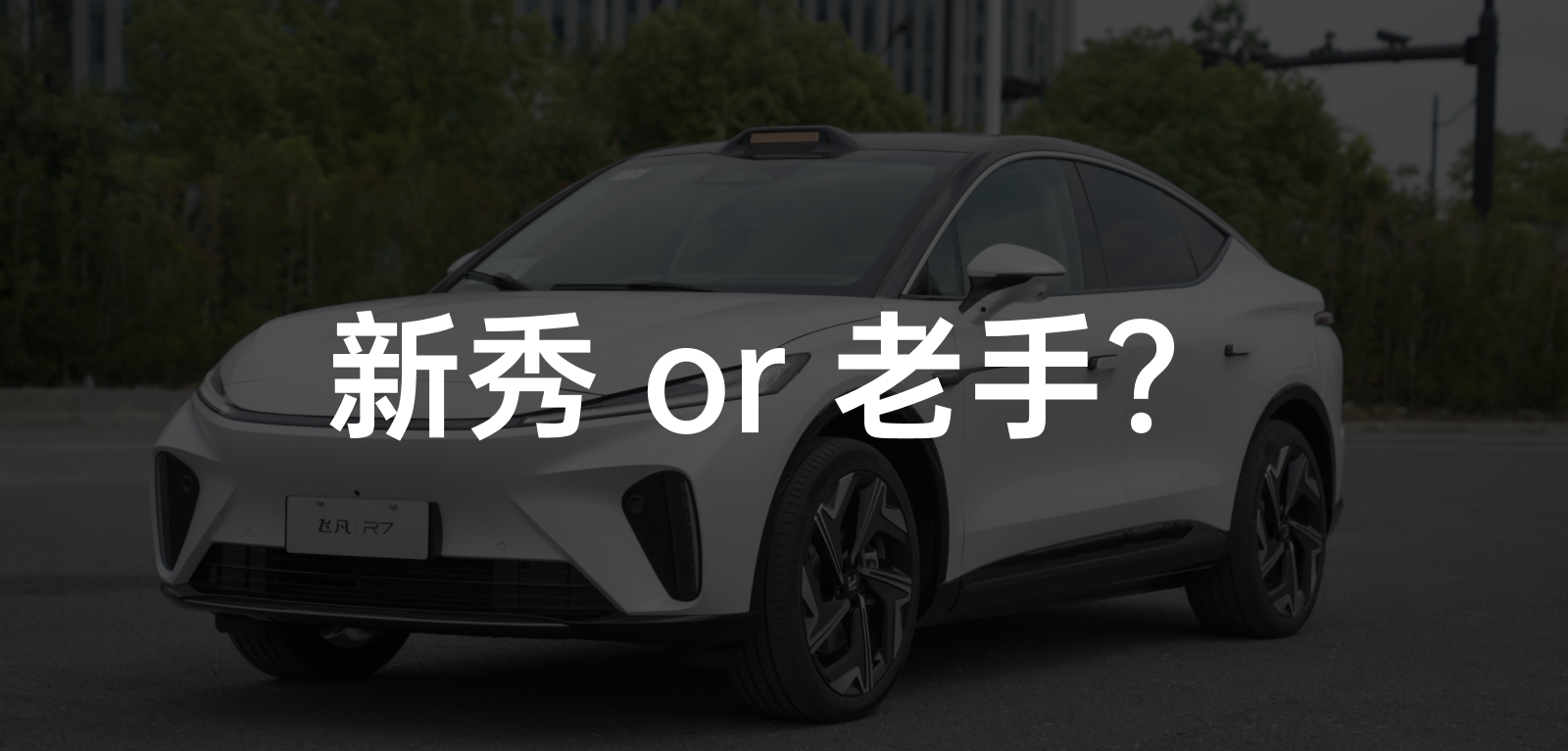On September 27th, RisingAuto R7 announced its price, with a post-subsidy price range of 289,900 – 356,900 yuan. As R7 supports battery swapping throughout the entire series, choosing the battery leasing model can result in a direct discount of 100,000 yuan.
The press conference announced a total of four versions, and the specific configuration details are as follows.

To briefly distinguish between these four configurations, in terms of the intelligent cockpit, they are all standard across the entire series. The main differences between the four versions are in terms of the powertrain and batteries, as well as the optional advanced driver assistance systems.
Currently, all four versions will be equipped with the basic RISING PILOT hardware, which includes a 4D radar and an Orin X. Only the flagship high-end version can be equipped with the optional package that includes a laser radar, two 4D radars, and two Orin X processors. However, the price of this package is still unknown.

Compared to other vehicles in the same class, the starting price of RisingAuto R7 is not expensive.
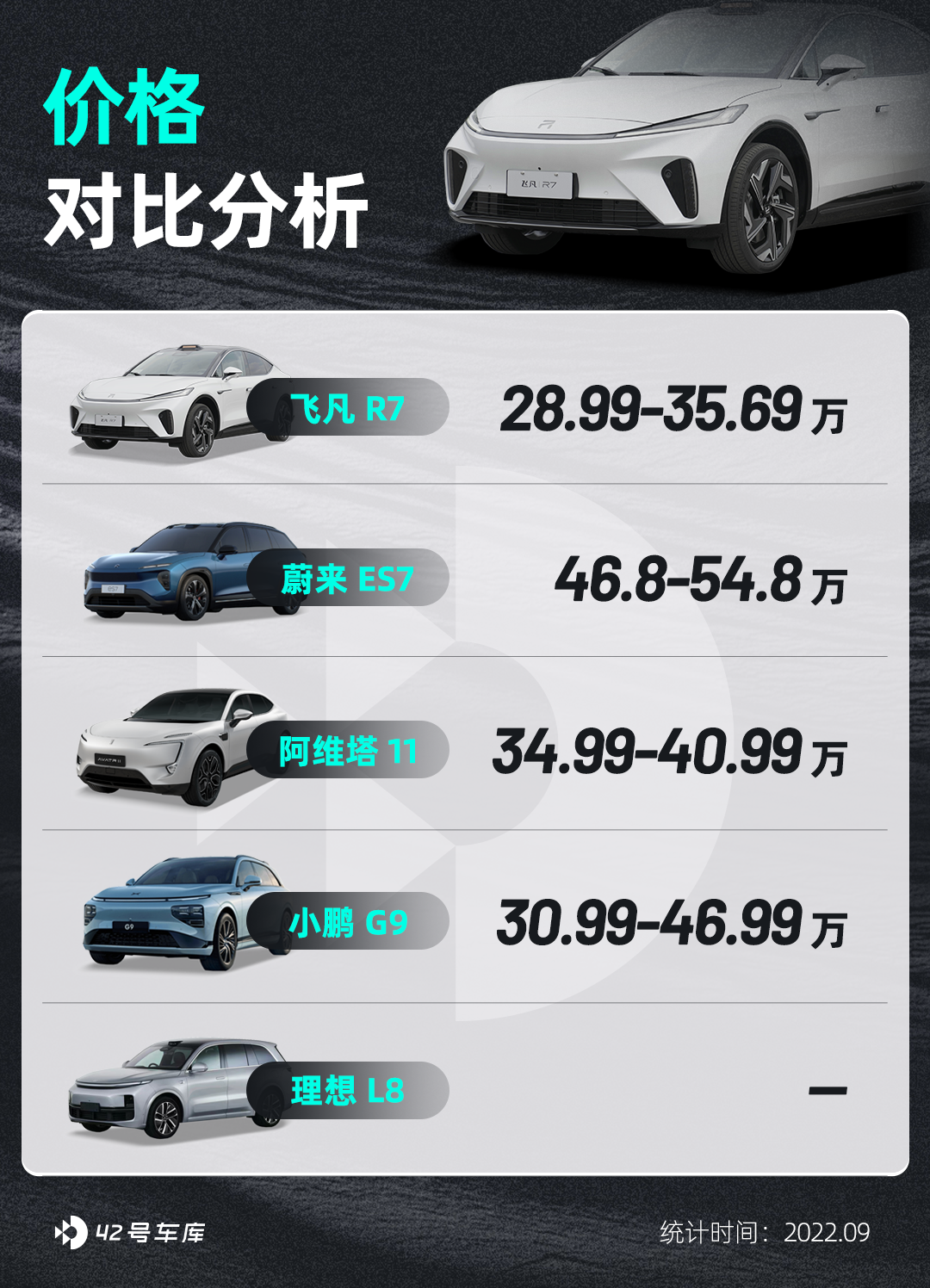
However, how does RisingAuto R7 perform? How does it compare to other new energy vehicles? We were fortunate to have the opportunity to dynamically test drive this vehicle before its launch.
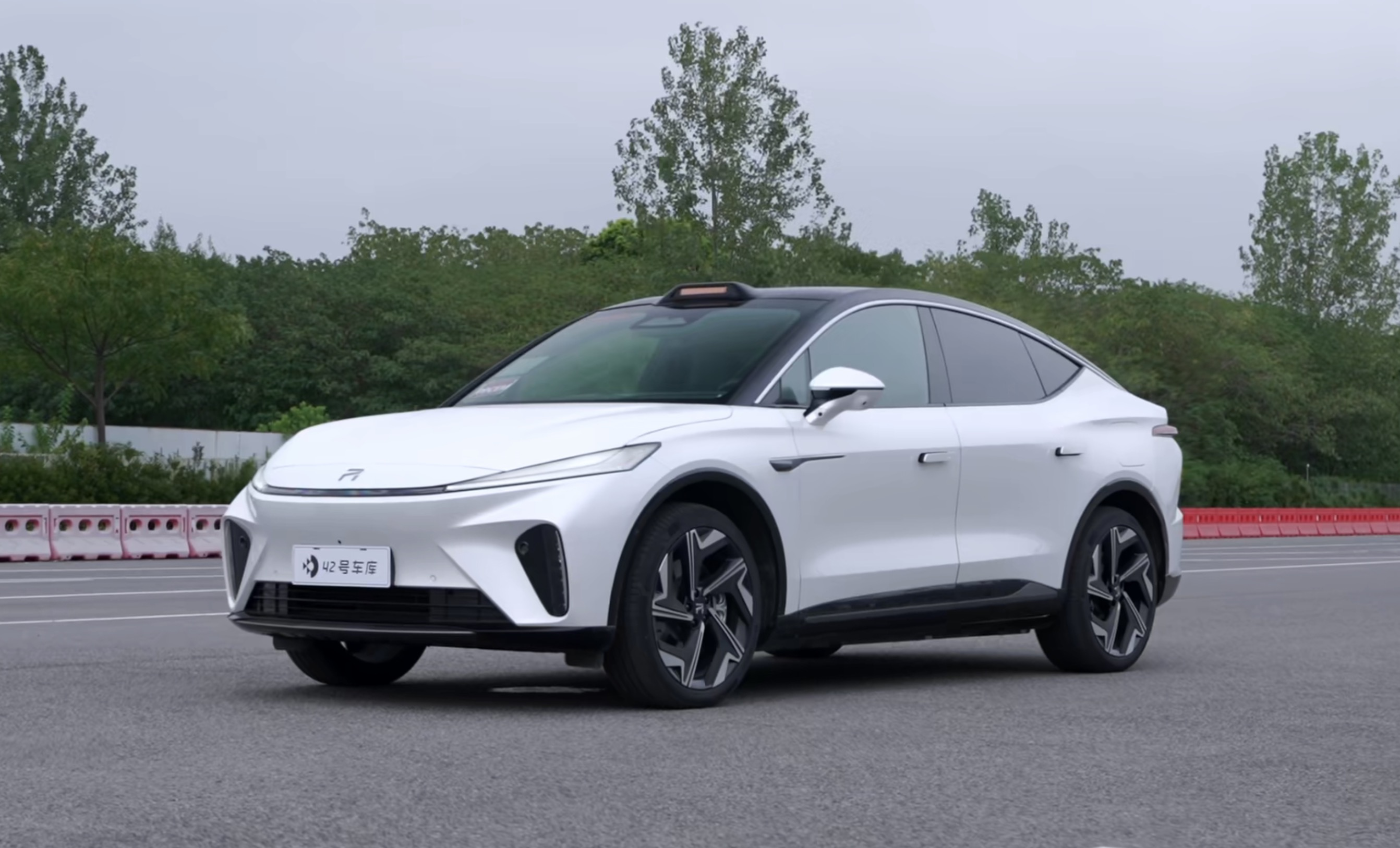
Initially, I did not have particularly high expectations for RisingAuto R7. However, after actually test driving it, I can confidently say that it is impressive in two main aspects: a refined and harmonious driving experience and a precise and responsive advanced driver assistance system.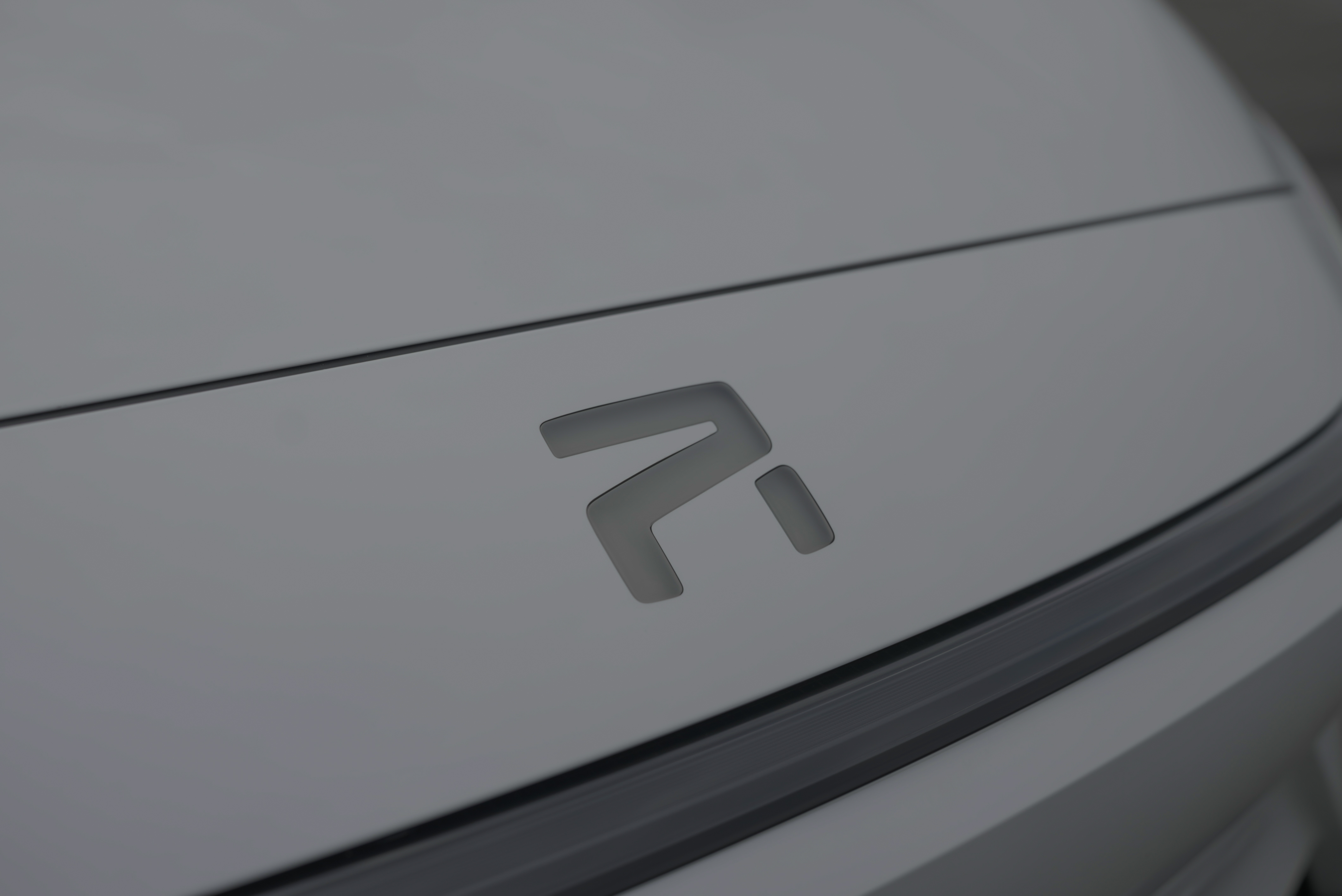
Get it moving
Let’s start with driving
As usual, let’s first take a look at the specifications. The FF R7 has two power versions: a single-motor version with a peak power of 250 kW and a four-wheel-drive version with a peak power of 400 kW.

The model we tried today is the four-wheel-drive long-endurance version, with a zero to one hundred acceleration time of 3.8 seconds. Especially with its direct waterfall-style oil-cooled electric motor, it should have excellent power output in theory.
Compared with the feeling of the G9 and ES7 models that accelerate directly, the acceleration of the R7 feels a bit like a “little sheep.”
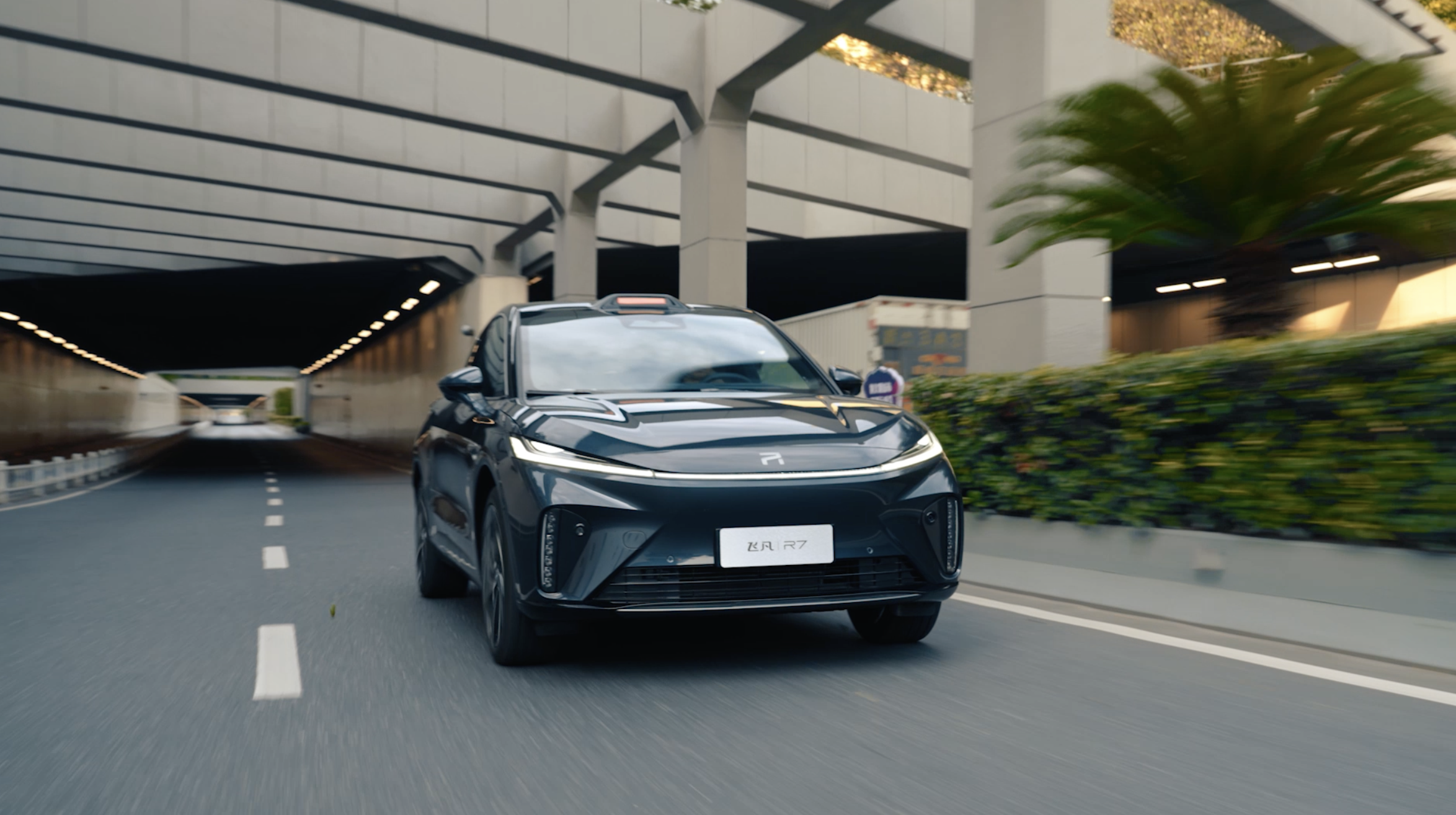
During actual driving, even when we switched to the most sporty mode, although this car is theoretically a 3-second car, the sensation is more like a 5-second car.
However, the advantage of the R7 in terms of driving lies in its allocation.
Firstly, the throttle response is very sensitive, and there is no delay when suddenly stepping on the accelerator. The peak torque explodes instantly.
Secondly, the feel of the R7’s accelerator and brake pedals is relatively heavy, but the pedal stroke is linear and controllable. This means that you get exactly what you press, without any sudden surges.
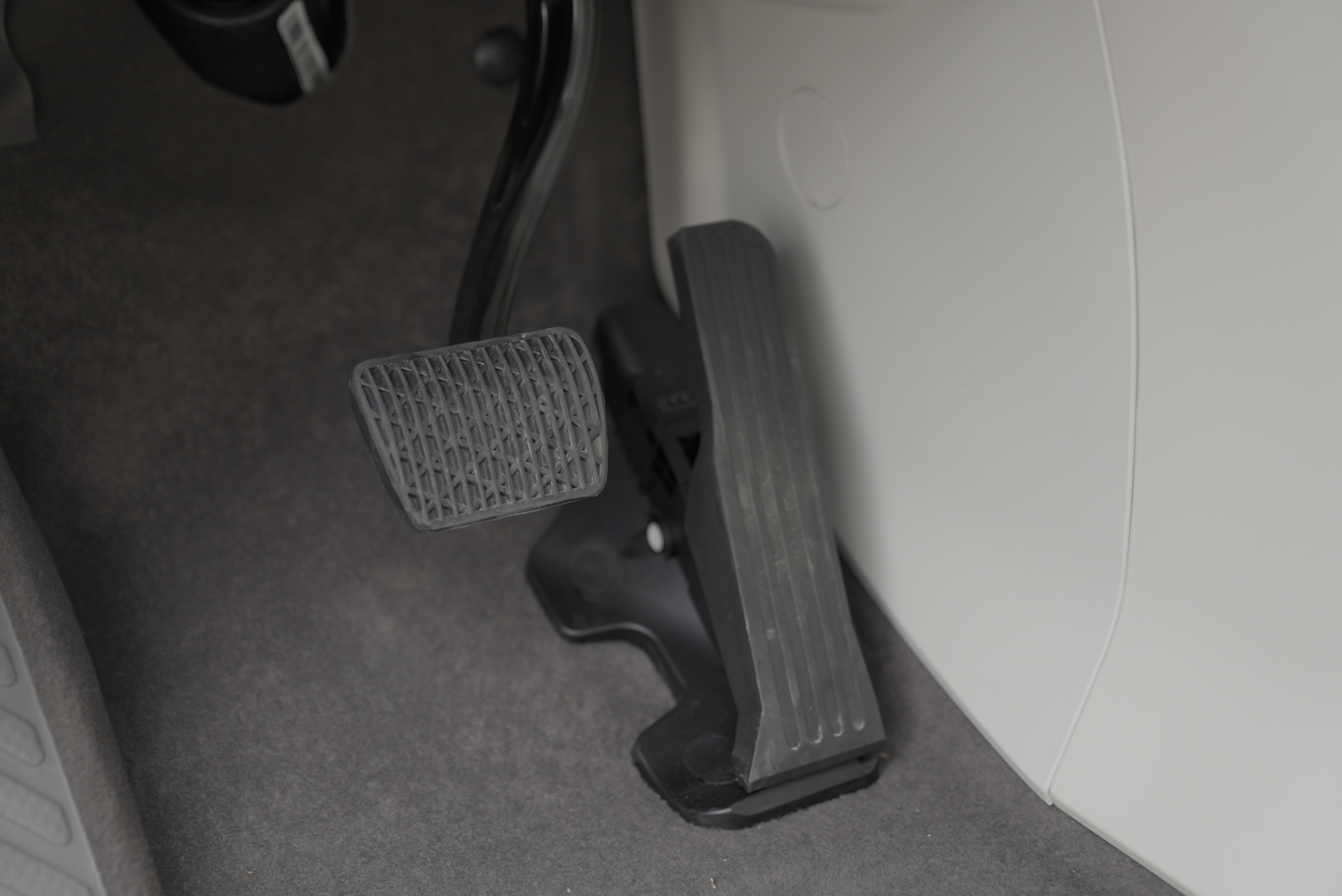
Moreover, the transition between the regenerative braking and mechanical braking of the braking pedal is also very smooth, and the overall allocation of CRBS is not abrupt.
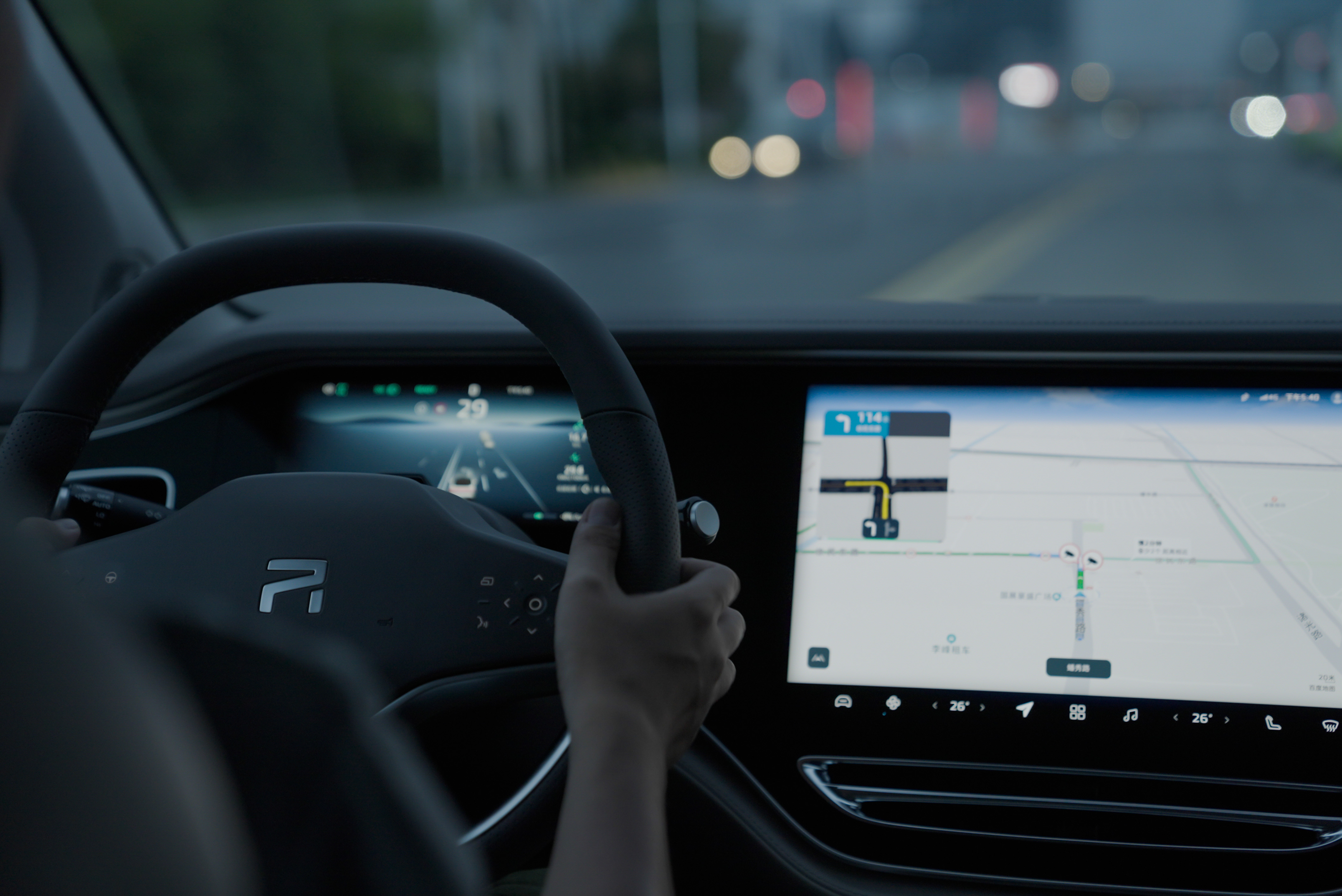
Thirdly, after adjusting to the Comfort mode, the steering is light and accurate, and the virtual central position is only about 1-2 degrees. However, the grip of the steering wheel wrapped in a perforated material is average. Moreover, during normal driving, it is easy to accidentally touch the tiger’s mouth position.“`markdown
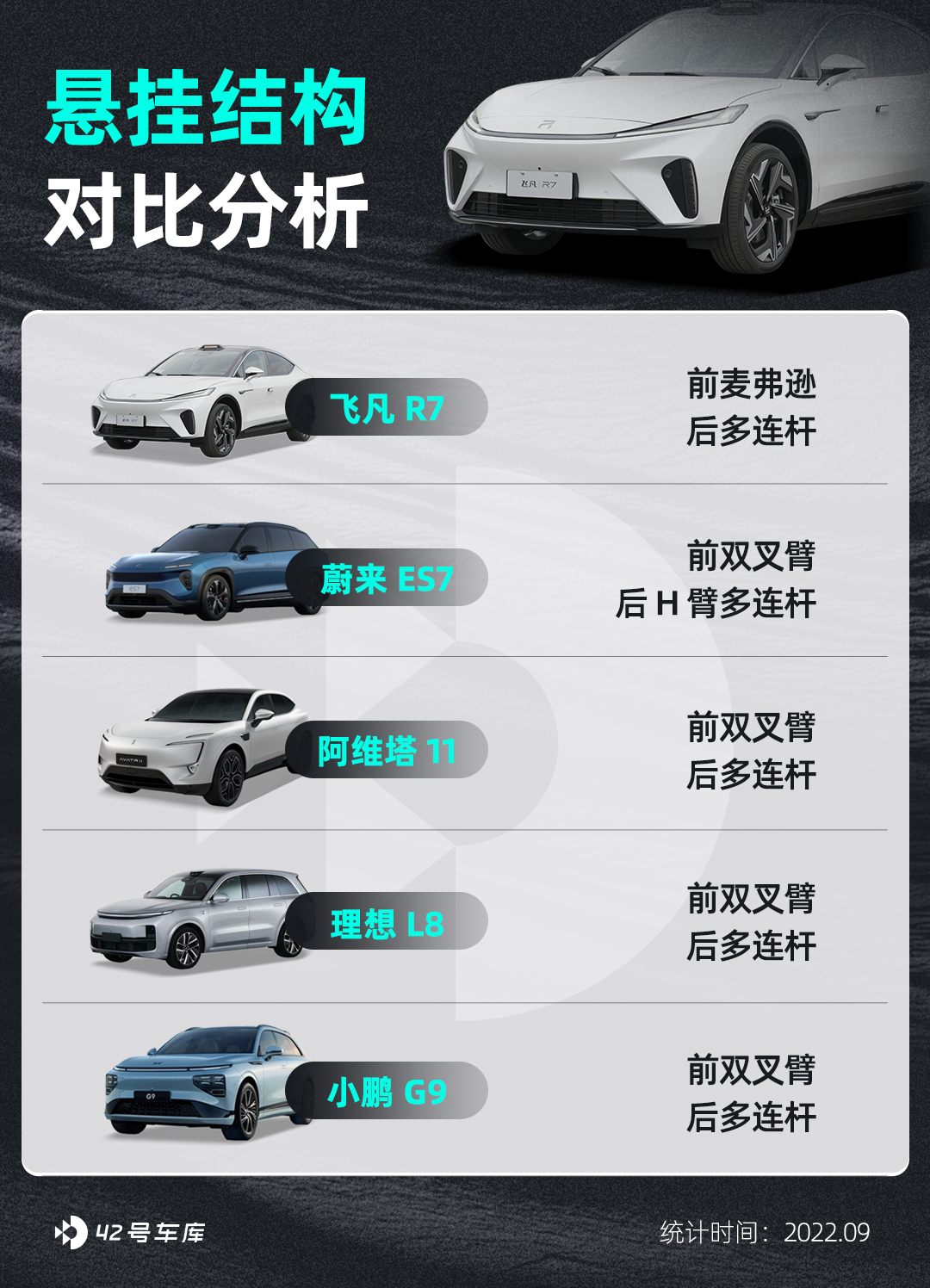
In terms of chassis, although the front suspension appears to be somewhat less luxurious than its counterparts, it is ultimately a product of a traditional automaker, and the driving experience surpasses one’s expectations.
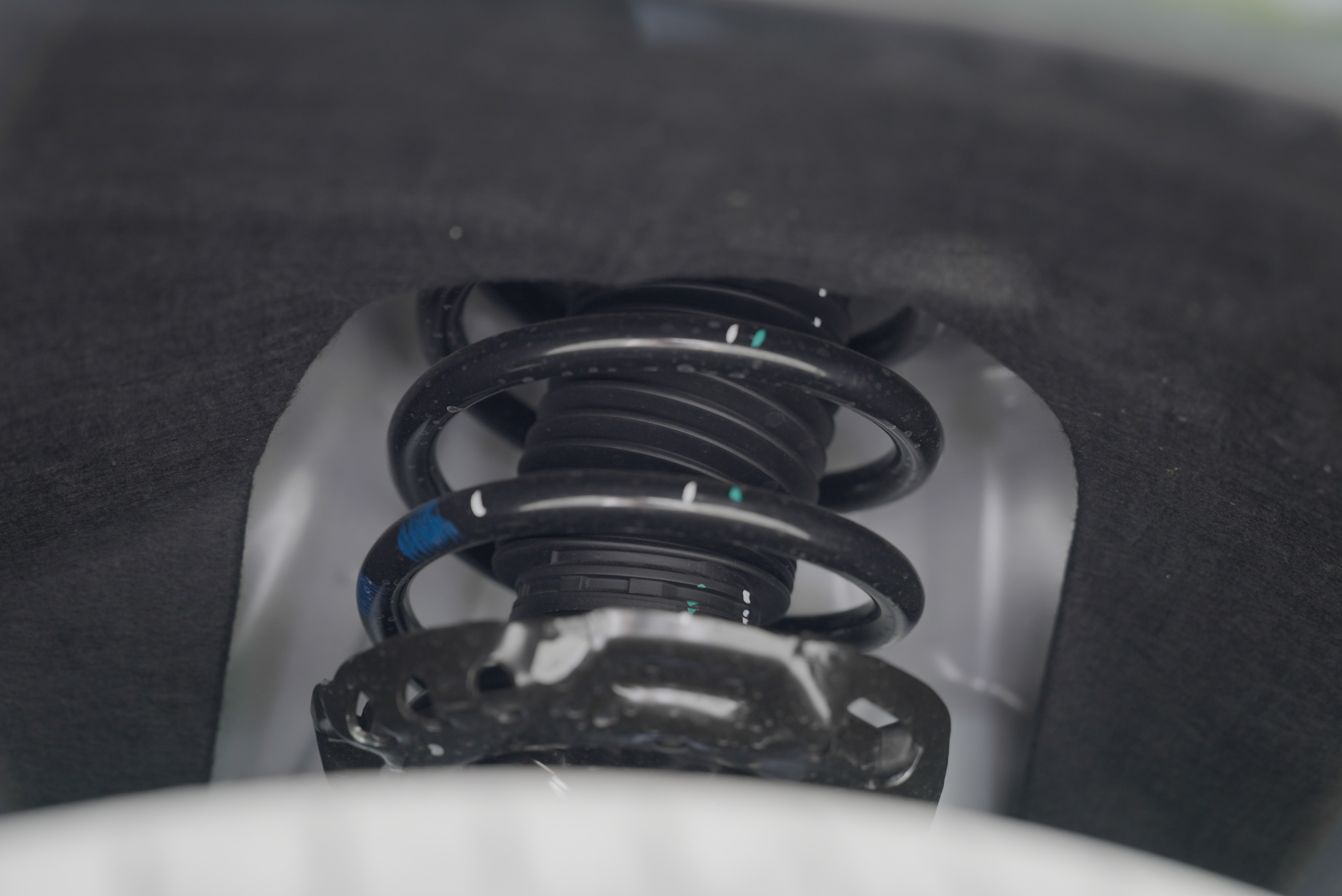
The rebound damping of the suspension is set towards comfort, enabling the car to pass through bumpy roads at relatively high speeds while holding the body in place without producing any unnecessary shaking. Overall, the driving experience is similar to my daily driver Volkswagen ID.4.
Therefore, generally speaking, the match between the suspension, steering wheel, and pedals is very good, and there are no apparent shortcomings in each category. In driving, the steering, throttle, brakes, and suspension of the R7 are all very linear, without any single fracture, forming a valuable overall harmony.

There is also an interesting little feature, the R7’s power mode adjustment can actually use infinite adjustment. However, minor adjustments are actually not noticeable in terms of driving experience. Owners may need to make significant changes to the power output to see a marked difference, allowing customization of the output to fit their driving habits.

Overall, R7’s driving quality leans towards comfortable quality, making daily commuting experience relaxed.
How about the range?
During the brief 65 km test drive, I also conducted an energy consumption test. Our route included about 50 km of highway and 15 km of city highways and urban routes, with an outdoor temperature of 27 degrees, three adult males weighing a total of approximately 180 kg inside, and automatic air conditioning set to 23 degrees. The final result of the test is as follows.
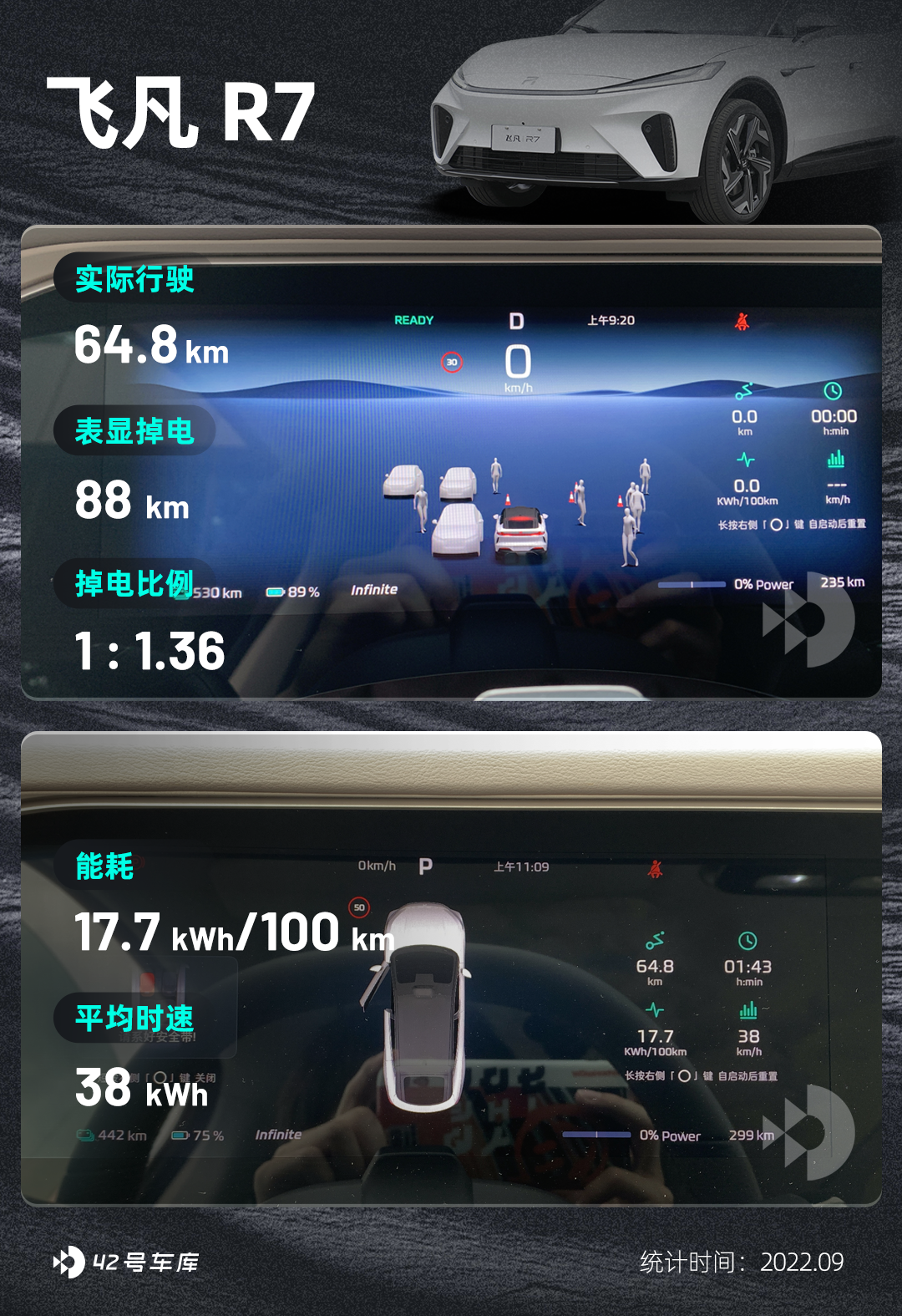
“`This is a pretty impressive energy consumption data.
One of the key factors is that the drag coefficient of the FF R7 is only 0.238, which is much lower than the 0.272 of the XPeng G9 and 0.263 of the NIO ES7. This data has greatly helped the energy performance of the R7.
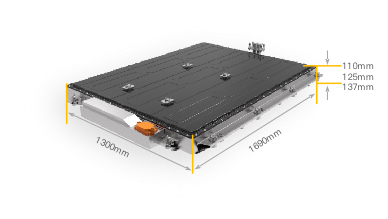
At the unveiling, FF named its tri-electric system the “RISING POWER” energy solution, with an energy density of the battery raised to 195 Wh/kg, and a maximum thickness of 137 mm for the battery pack. The version we drove with the CLTC has a range of 606 km.
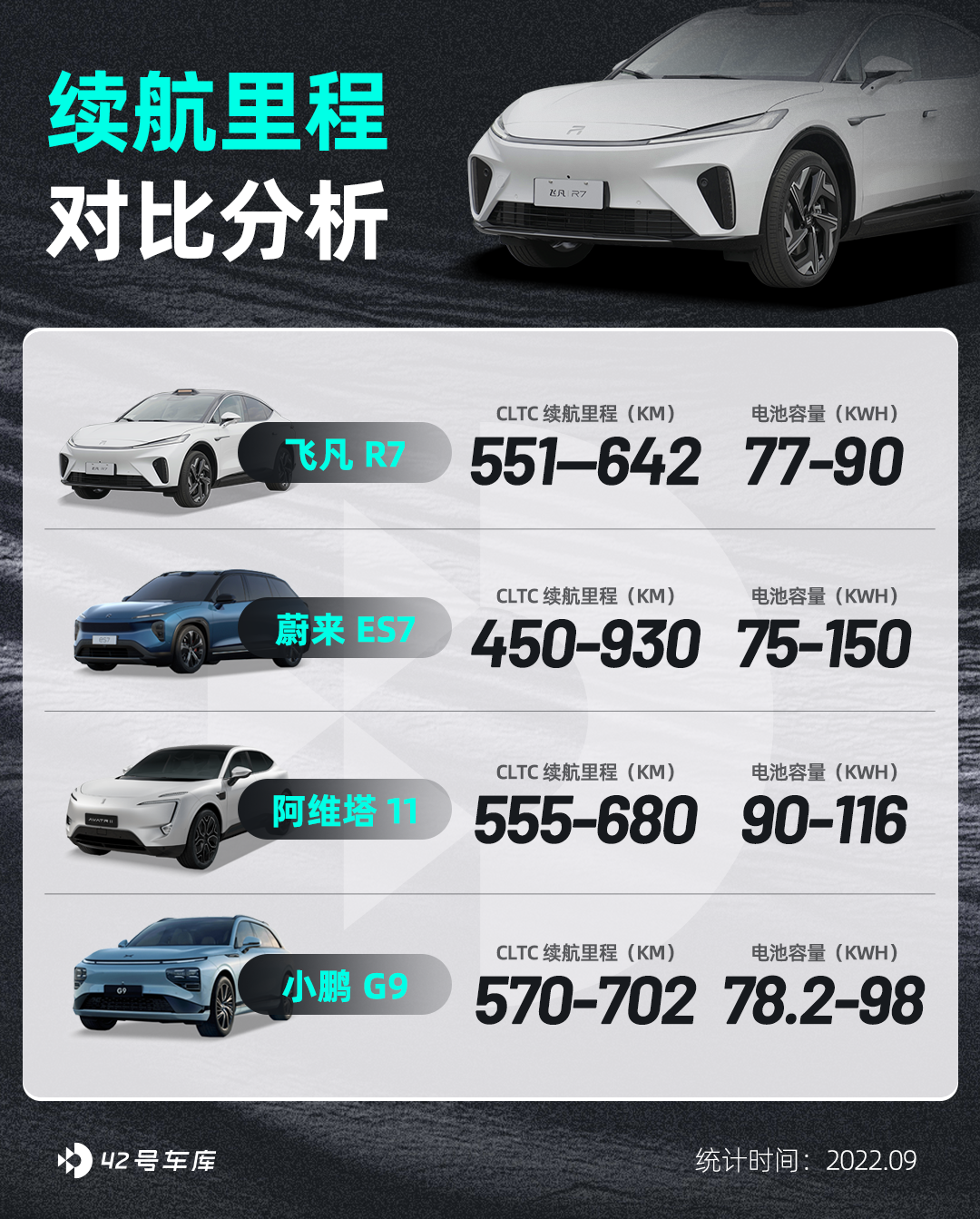
According to the data obtained during our test drive, the actual range is approximately 446 km. However, there are still many limitations and inaccuracies in this data. We provide this as a reference for everyone.
Now let’s talk about the assisted driving.
Specifically, we have done a detailed analysis of the assisted driving in our previous report. Interested friends can go back and take a look.
After my test drive, I have two overall feelings about the assisted driving system: fast and comprehensive.

The decision-making is fast. When changing lanes, the system quickly responds, and once the rear is clear, it changes lanes immediately without hesitation. When NOA is activated, there are times when I haven’t even realized that there is a slow car in front of me, and it has already helped me automatically change lanes to overtake on the fast lane.

The information display is comprehensive and visual. You can see exactly how far and how many cars are around you, as shown in the picture below. In heavy traffic, you can see a series of cars in the visualization, which is truly impressive.

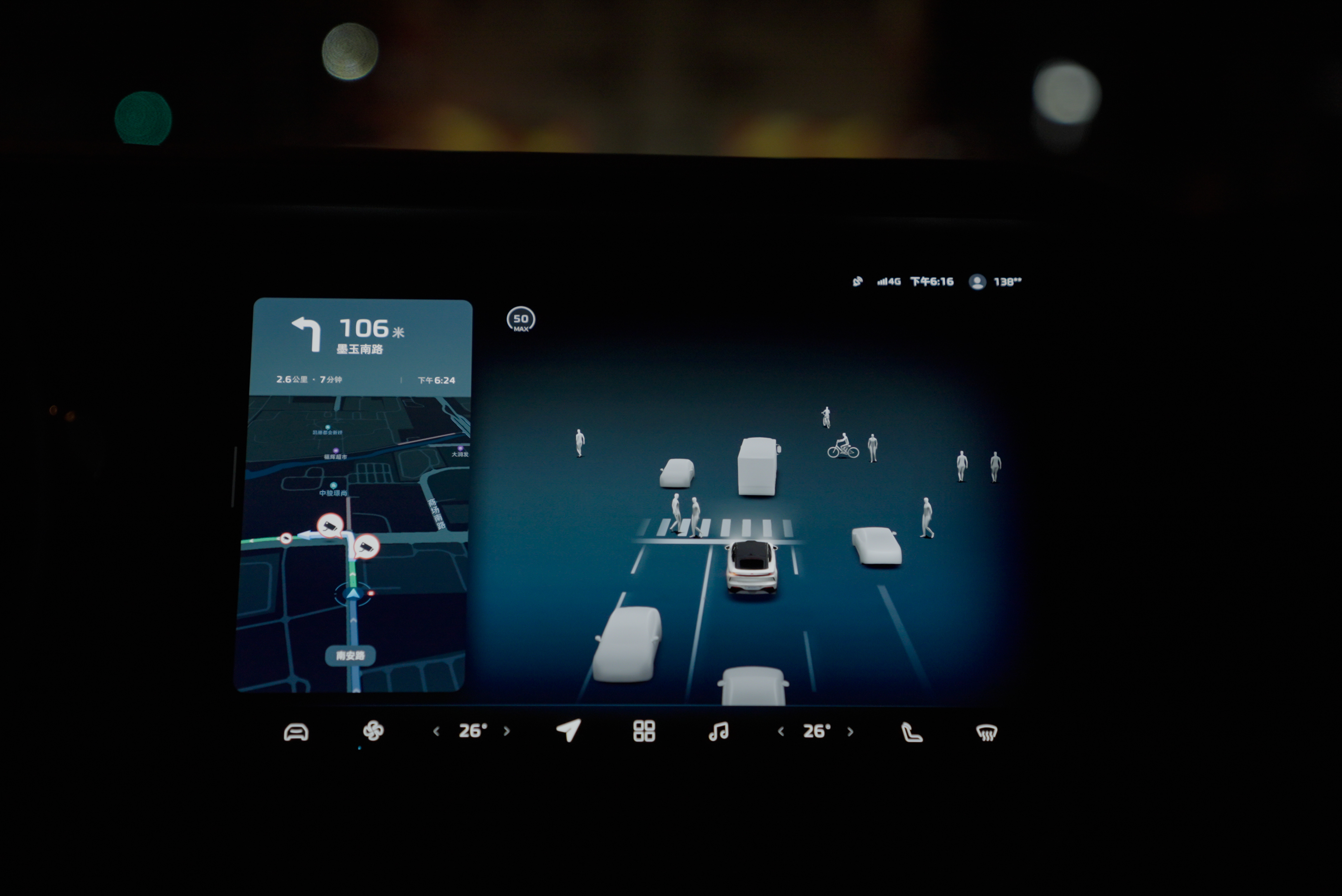
Of course, this is not just a facade. In terms of actual experience, the vehicle can recognize more objects, which means that it can handle road information more calmly, and it also has more safety redundancy for sudden events.

Speaking of this, we have to mention the FeiVan R7 assisted driving hardware, which includes a LIDAR, a Valeo 4D imaging radar, a front 8 million pixel 3-camera system, and dual Orin X computing power 508 TOPS, with 33 perceptual hardware throughout the vehicle. Especially the LUMINAR 1550 nm LIDAR, compared with the solutions used by new forces, can be said to be at the top level currently.
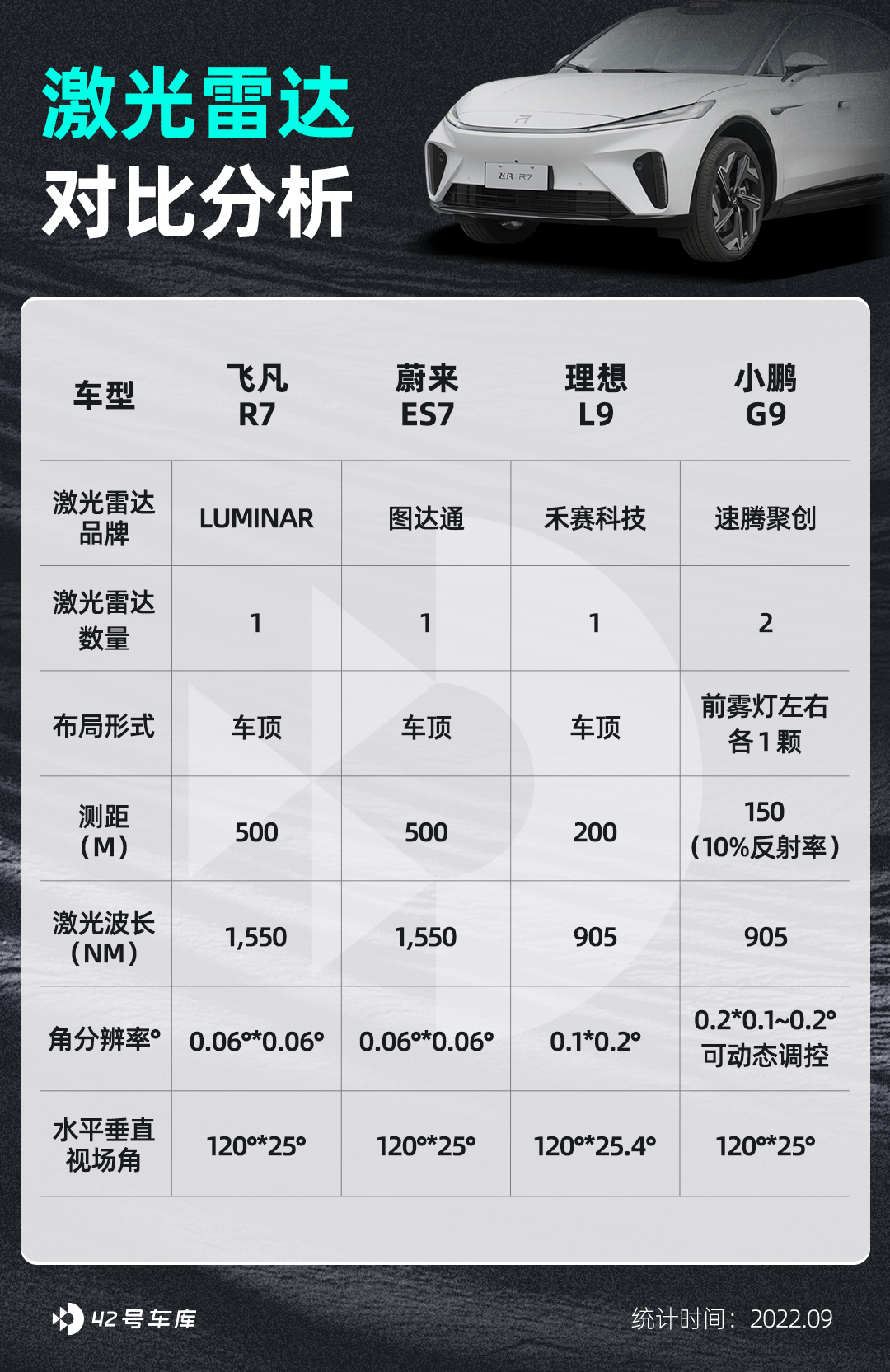
The potential of this hardware is high, but as we all know, software is the root of how to achieve the potential.
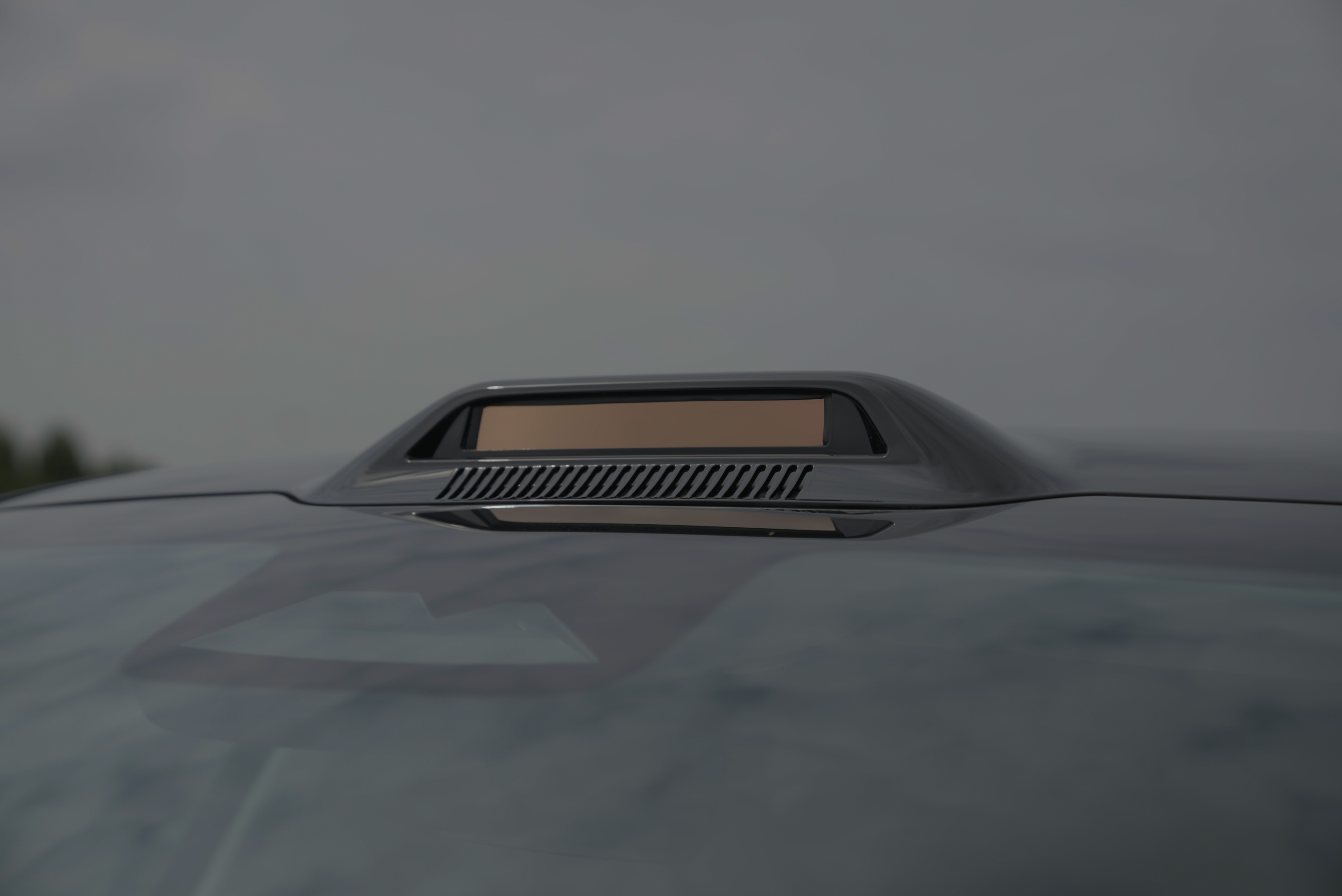
The underlying technology of FeiVan’s assisted driving comes from the PP-CEM™ platform, and the algorithm is developed completely in-house. Moreover, FeiVan’s RISING PILOT system for R7 uses a front and rear fusion solution. The benefit is that it can more accurately recognize road information and make quick judgments and decisions.

Therefore, for a vehicle model with very rich perceptual hardware like this, FeiVan’s RISING PILOT provides a complete and easy-to-use assisted driving system for the R7.
However, we also encountered several problems during our test drive.- First, if there are a lot of fast-approaching cars behind, changing lanes will become less proactive, and the command may not even be initiated until approaching the ramp exit, almost reminding the driver to take over the vehicle when the vehicle is about to reach the exit. If the driver does not carefully observe the map, they may miss the intersection on congested roads.
- Second, for large curvature bends, the stability is slightly inferior. This is not referring to lateral control but longitudinal control. In some large curvature bends, R7 will exhibit a sudden, short, and high-frequency braking, and the driver and front passenger can clearly feel the vehicle’s sway. The speed control in the bend is not ideal.
- Third, in terms of visualization, there are several unsatisfactory points about the AR-HUD system used by Flyinova, which we will discuss details later when experiencing the back of the cabin.
- In general, considering that RISING PILOT is Flyinova’s first mass-produced assisted driving system, I think the overall performance still meets expectations. Based on this luxurious perception hardware, I now anticipate what surprise Flyinova can bring in subsequent OTA updates.
After driving it, I feel…
Sharp and angular
As one of the editors who had been following Flyinova, I was already familiar with the appearance of this car. However, after completing my drive and parking the car, R7’s styling still caught my eye for a few more glances.
The whole vehicle has sharp and angular lines, with a very sharp front and waistline. The design of the sloping back and rapidly narrowing rear lines, together with the penetrating front and rear light groups, further enhance R7’s futuristic feel.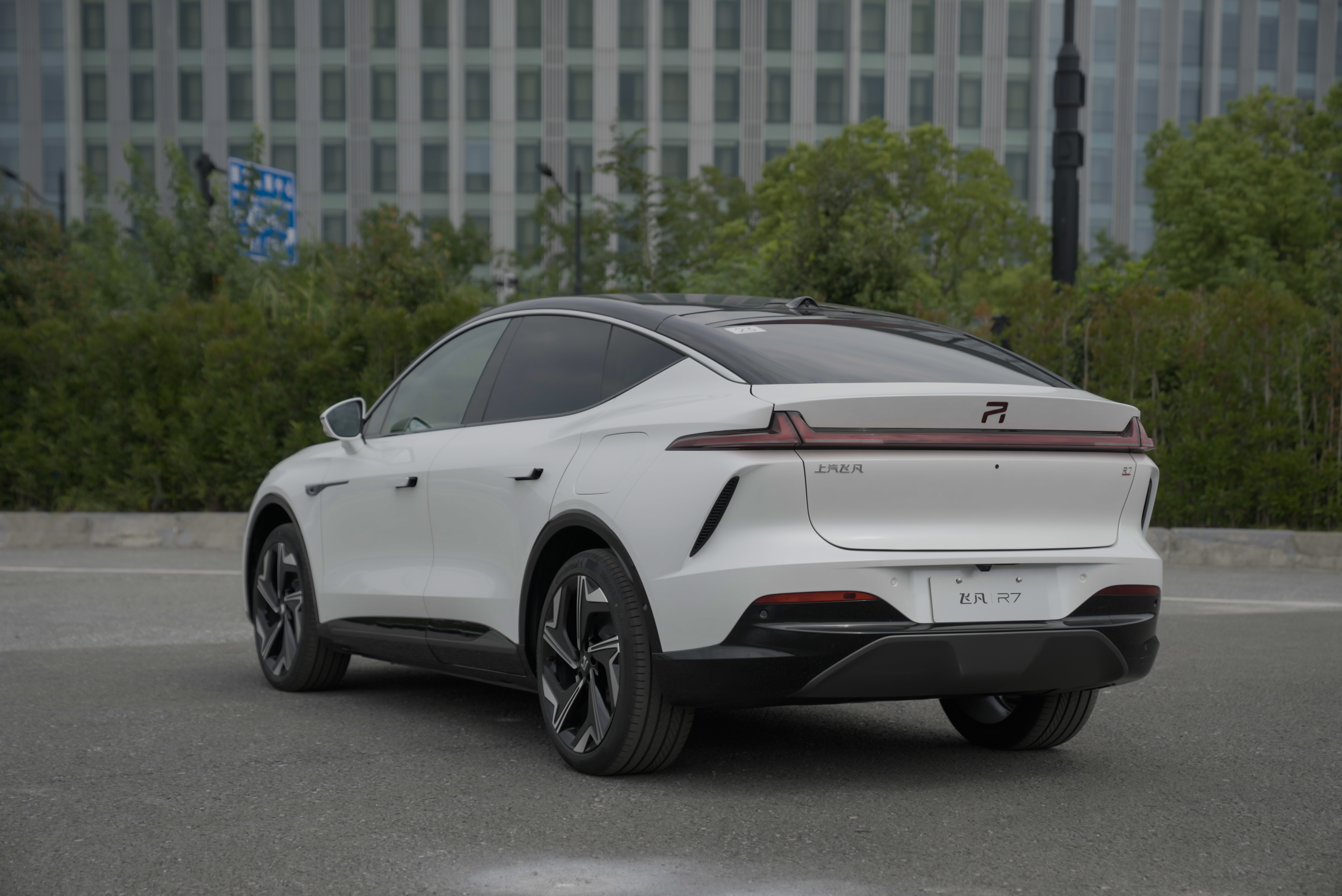

The front and back of the car are equipped with Michelin PremiunContact C tires in 235/45 R21 and 265/45 R21 sizes respectively, and the dry grip of these quiet tires is pretty good.

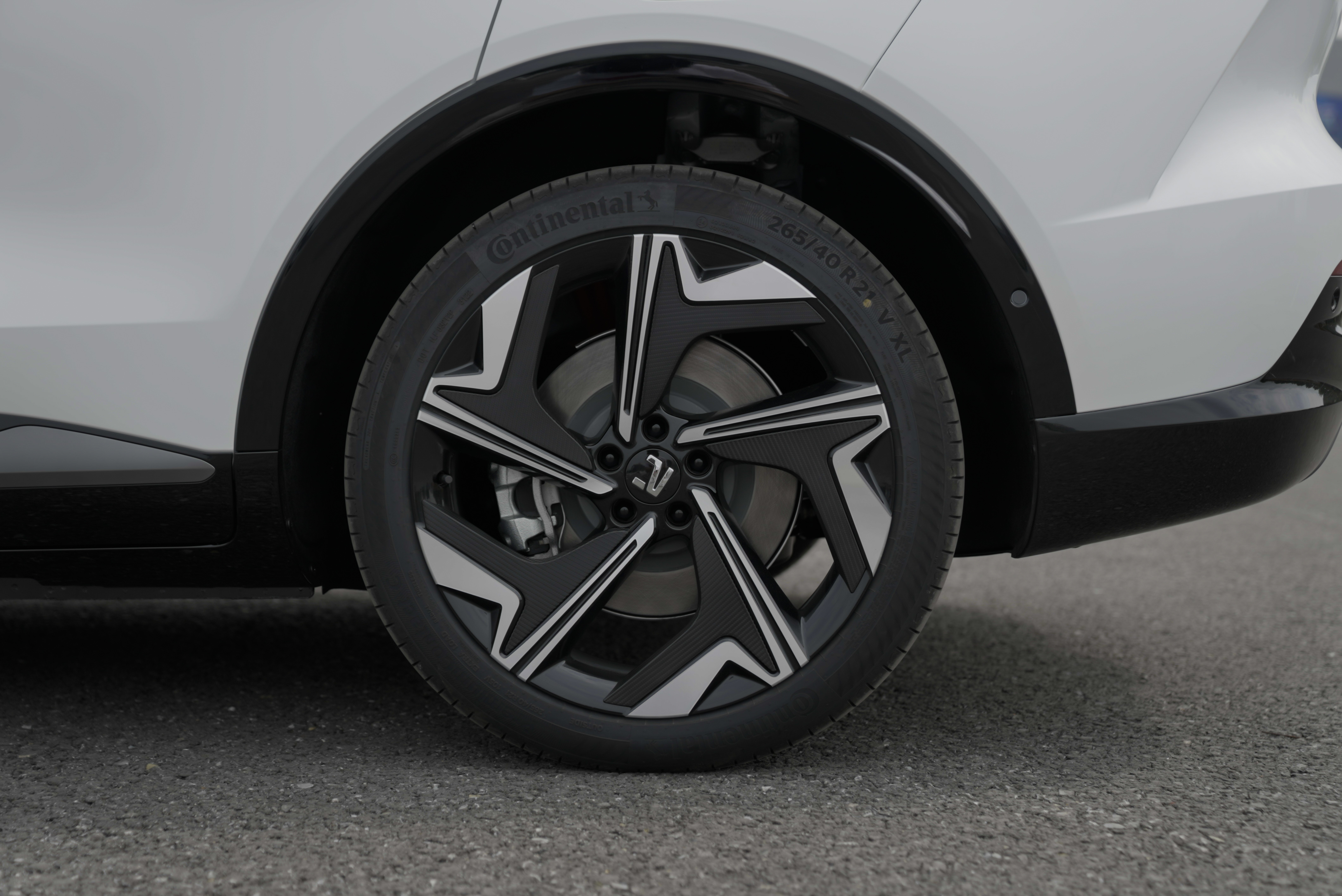
The car comes with frameless doors on both sides and laminated glass, and the front doors are electrically powered. Unfortunately, wind noise can still be heard when driving on the highway, and the high-frequency noise level is not ideal in terms of NVH.


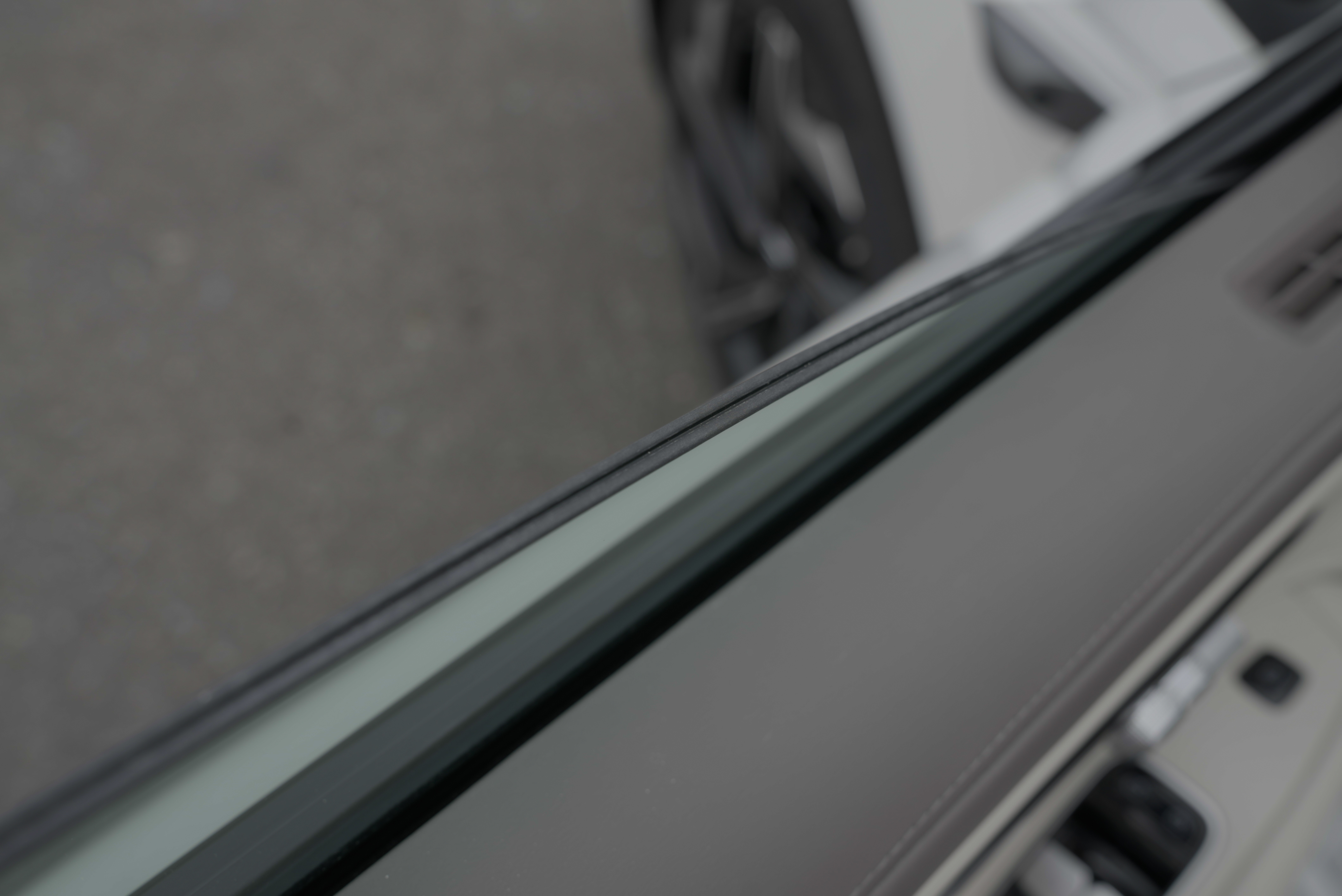
Opening the front compartment, there is no front trunk, and there is only a windshield washer fluid fill port below the hood.
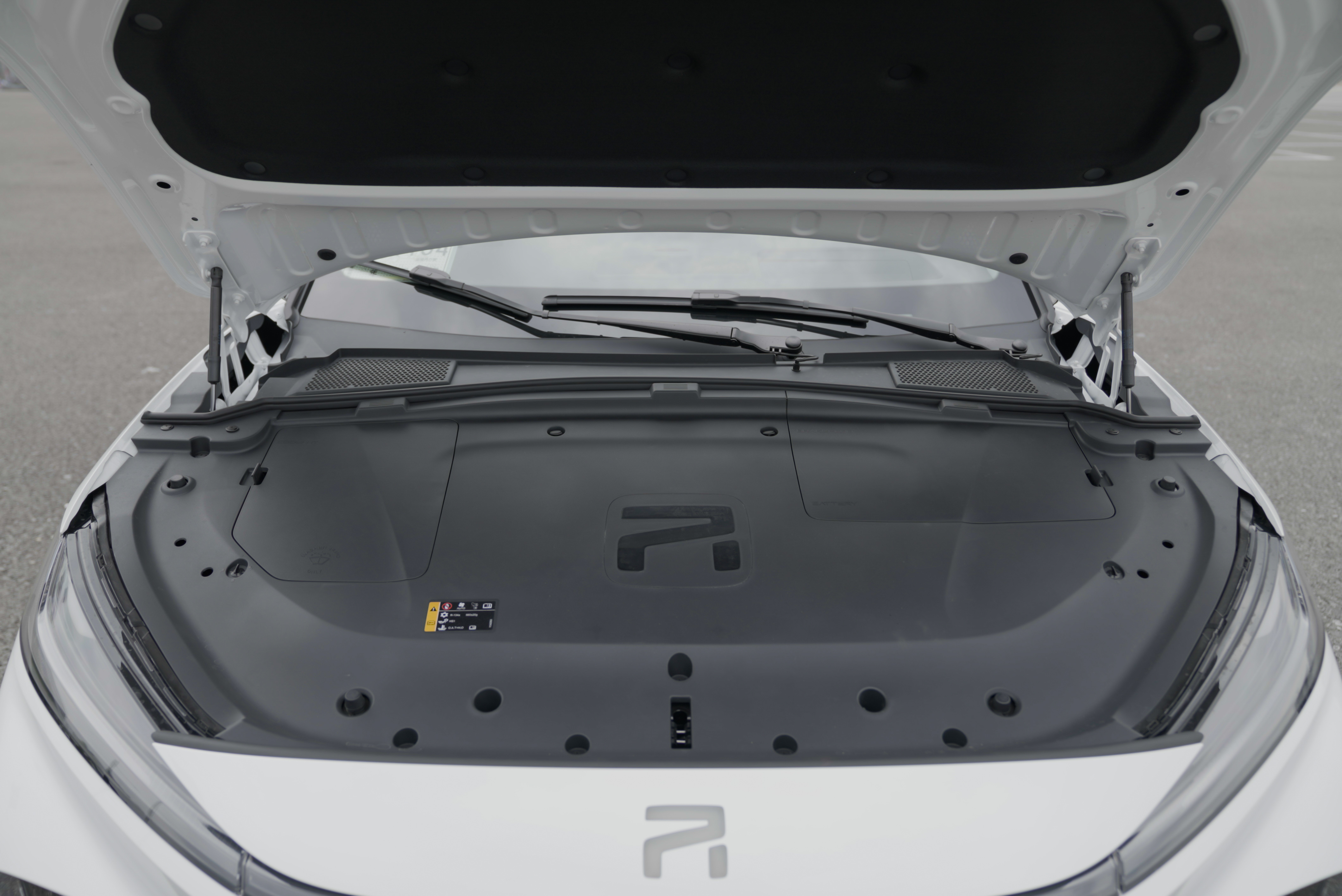
Opening the trunk, the depth is pretty good. Unfortunately, the sleek design of the body causes a loss of some upper space, and larger objects with longitudinal volume cannot be put in.
A wheelbase of 2,950 mm is average for the same class of products. However, we still need to test it in the car to see how it performs specifically.

What are the highlights of the interior space?
For our car, the seat color is white, and the material is NAPPA leather. The front seats are integrated sports seats with good overall wrap and support. It’s worth mentioning that the headrests in the front row are very soft.
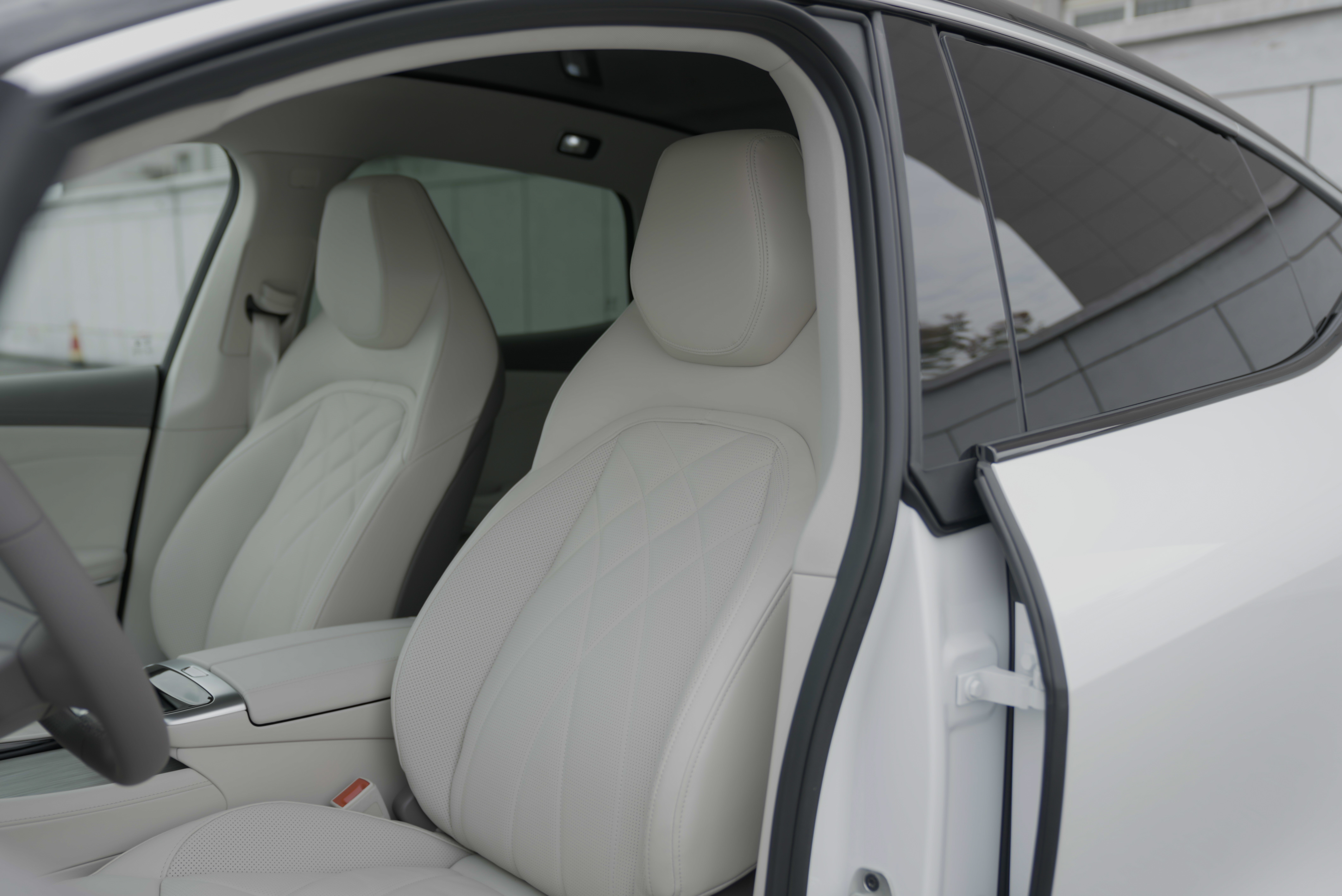
At the same time, the adjustment of the front seats is all on the door panel, which is very “Mercedes-Benz”.
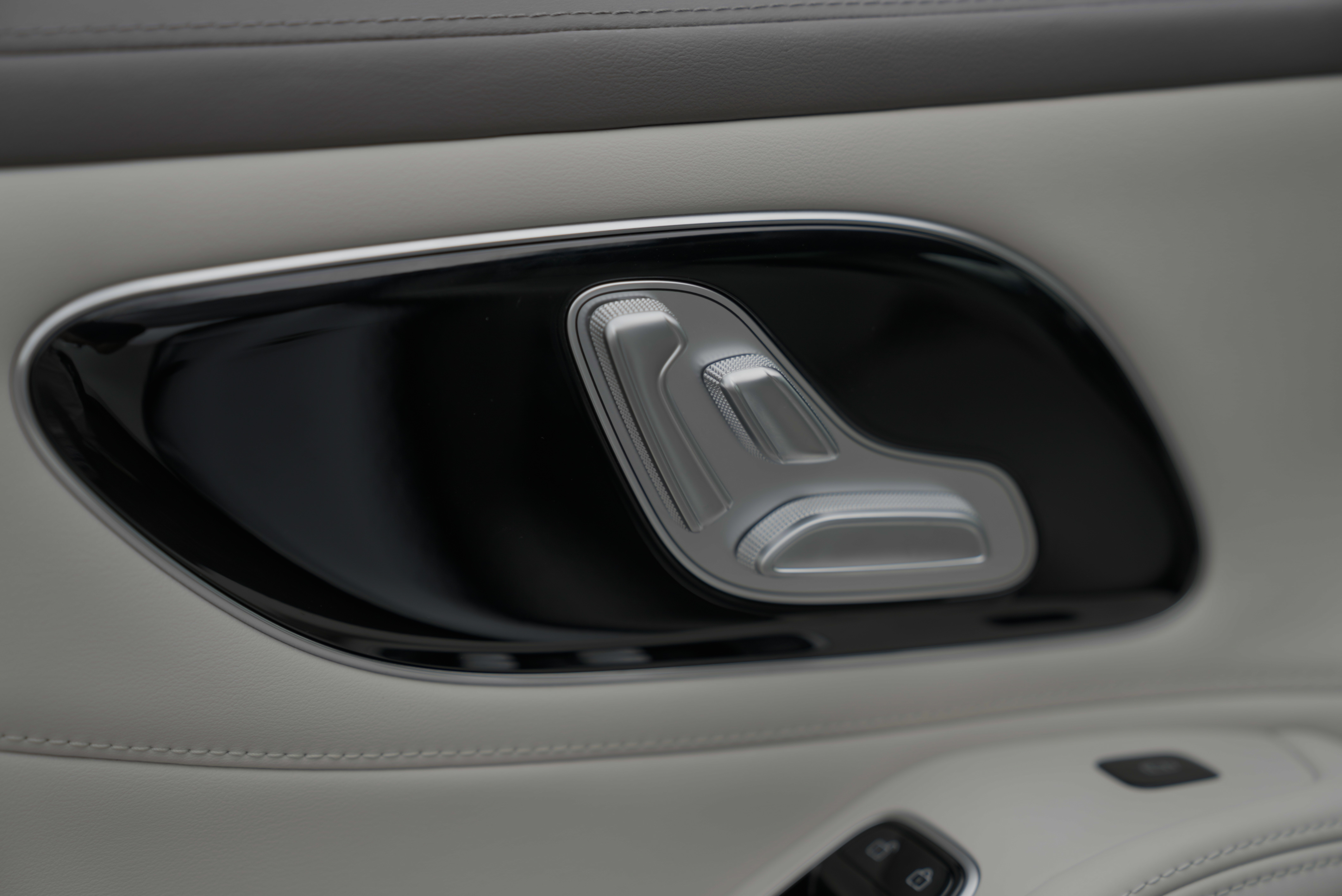
The co-driver also comes with “Luxury Co-driver”, which has leg rest and footrest adjustment.
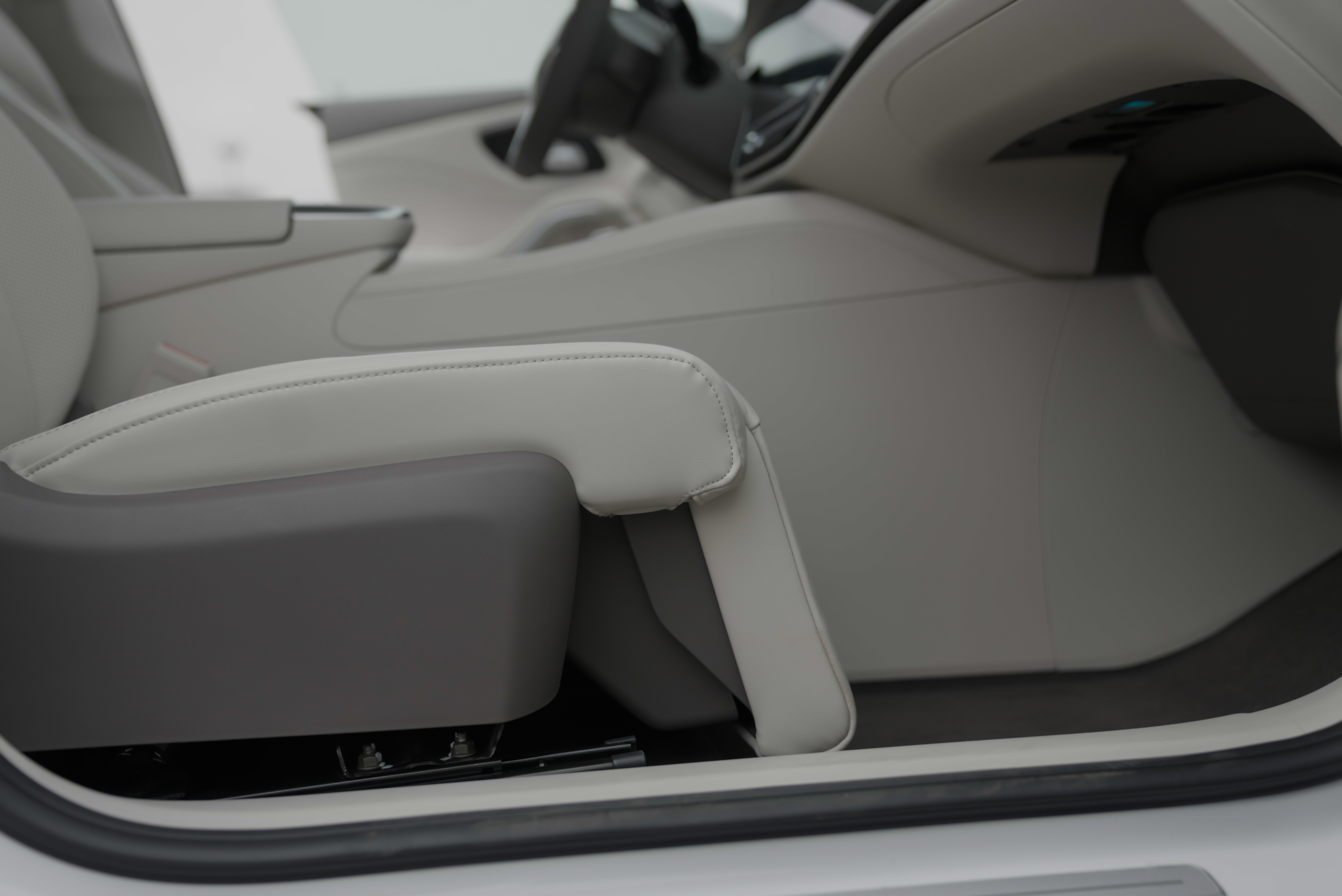
Looking up, there is a fixed panoramic sunroof. It’s a pity that the roof is not covered in suede, which makes the sense of luxury a bit lower.
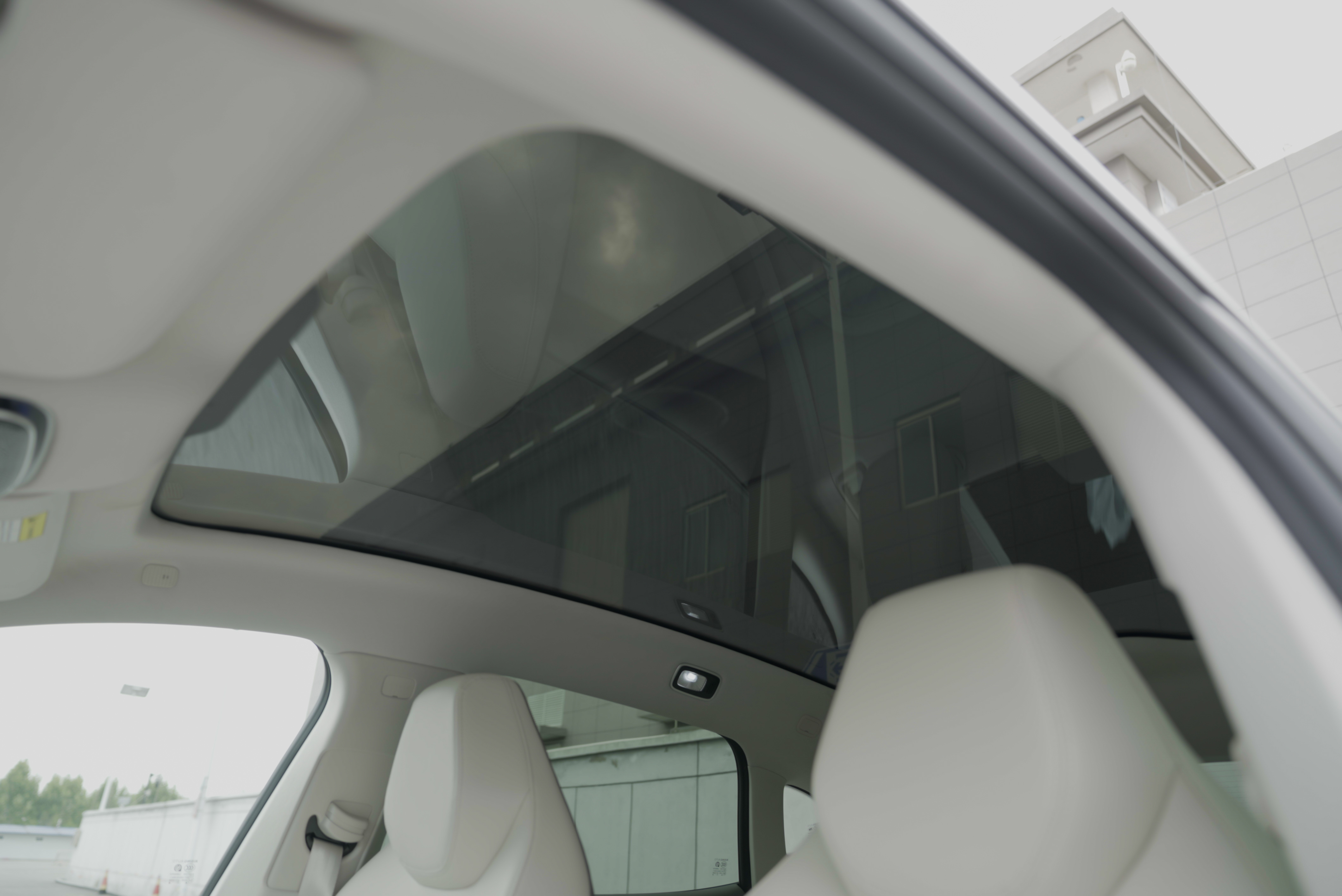
Looking down, there are two expandable cup holders in the front row. The depth of the center console is slightly shallower than that of a 500 ml bottle of cola.

Moving to the back row, I found it comfortable to sit in a relaxed position. There is plenty of legroom, enough for two fists, and about one fist and four fingers of headroom.Translate the Chinese Markdown text below into English Markdown text in a professional way, keeping the HTML tags inside the Markdown and outputting only the result.


Comparing the data for the rear seats of cars in the same class, we have:

The rear seat of the RisingAuto R7 is clearly larger than that of the G9. At the same time, the back seat has an upward angle, providing good support for the thighs. The overall rear-seat posture is slightly stretched out.
In addition, inside the rear central armrest, there are also two cup holders and a hidden storage compartment for small items such as mobile phones.
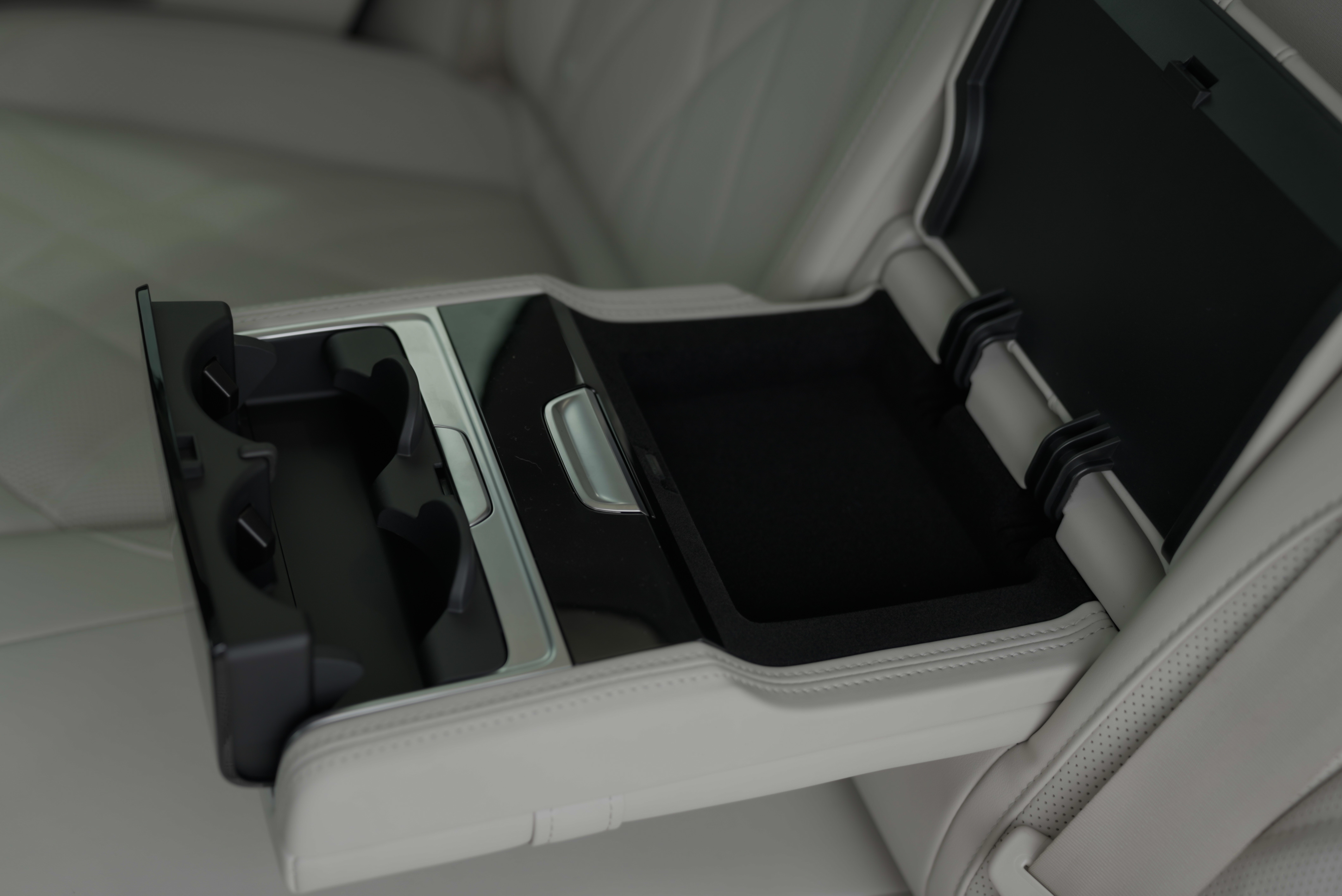
The only downside is that the rear headrests are far less comfortable than the front ones. They are still a bit hard.

Cabin Performance
In terms of intelligent cabin, RisingAuto’s configuration has almost everything: Three-screen system + 8155 chip + Streaming Media Rearview Mirror + 14 speakers.
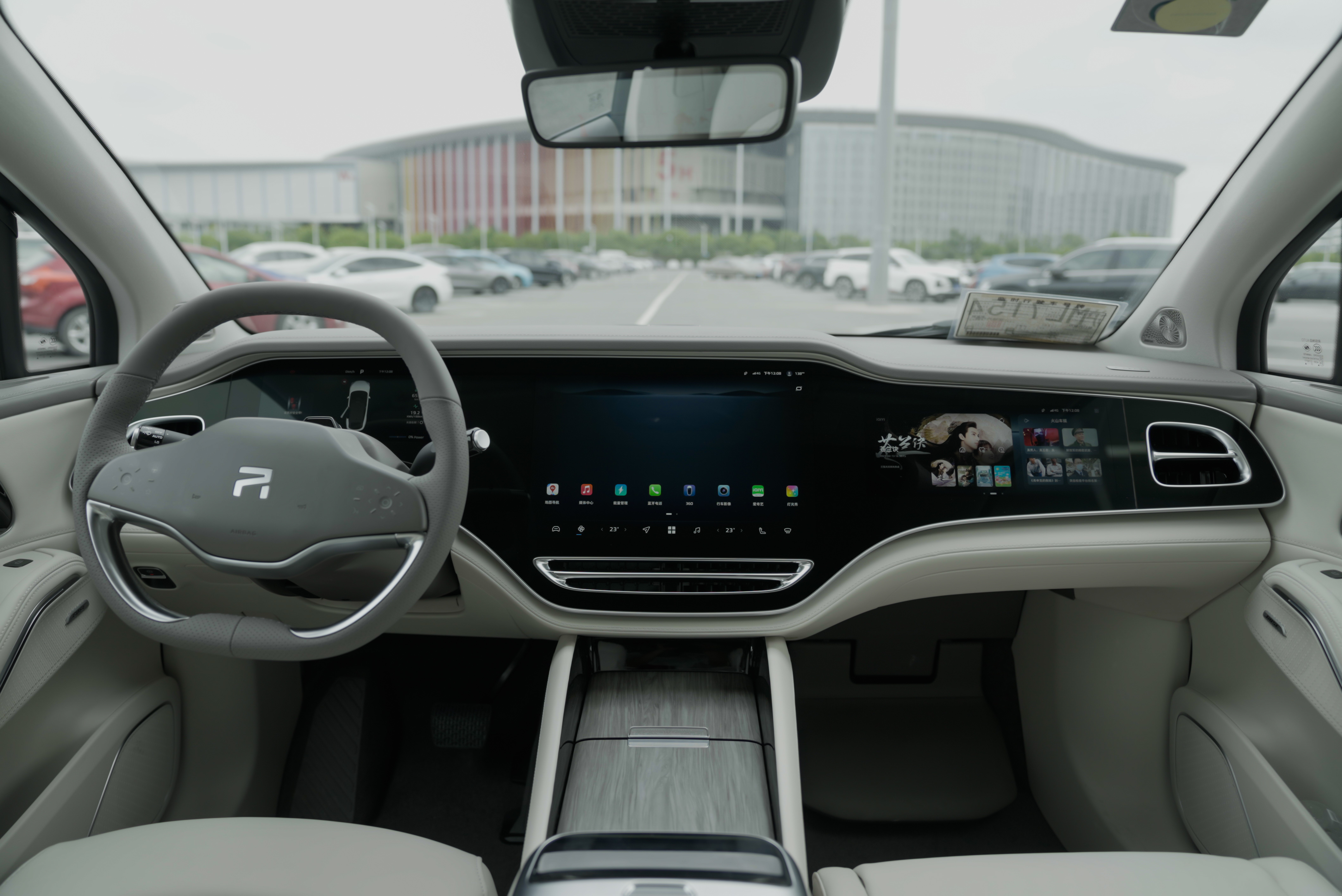
Of course, what catches your eye the most when you get into the car is this integrated 43-inch super large three-screen.
The data for the three screens are as follows:
-
10.25 inches, 1920 * 720 resolution, Mini LED instrument panel screen
-
15.05 inches, 2.5K resolution, OLED flexible material central control screen
-
12.3 inches, 1920 * 720 resolution, Mini LED material copilot screenApart from being large enough in size, the material used in R7 is also a highlight, with car rule-level OLED and Mini LED screens from JDI. Moreover, the visible angle of the hollow screen is close to 180 degrees, ensuring the same viewing experience for different seats.
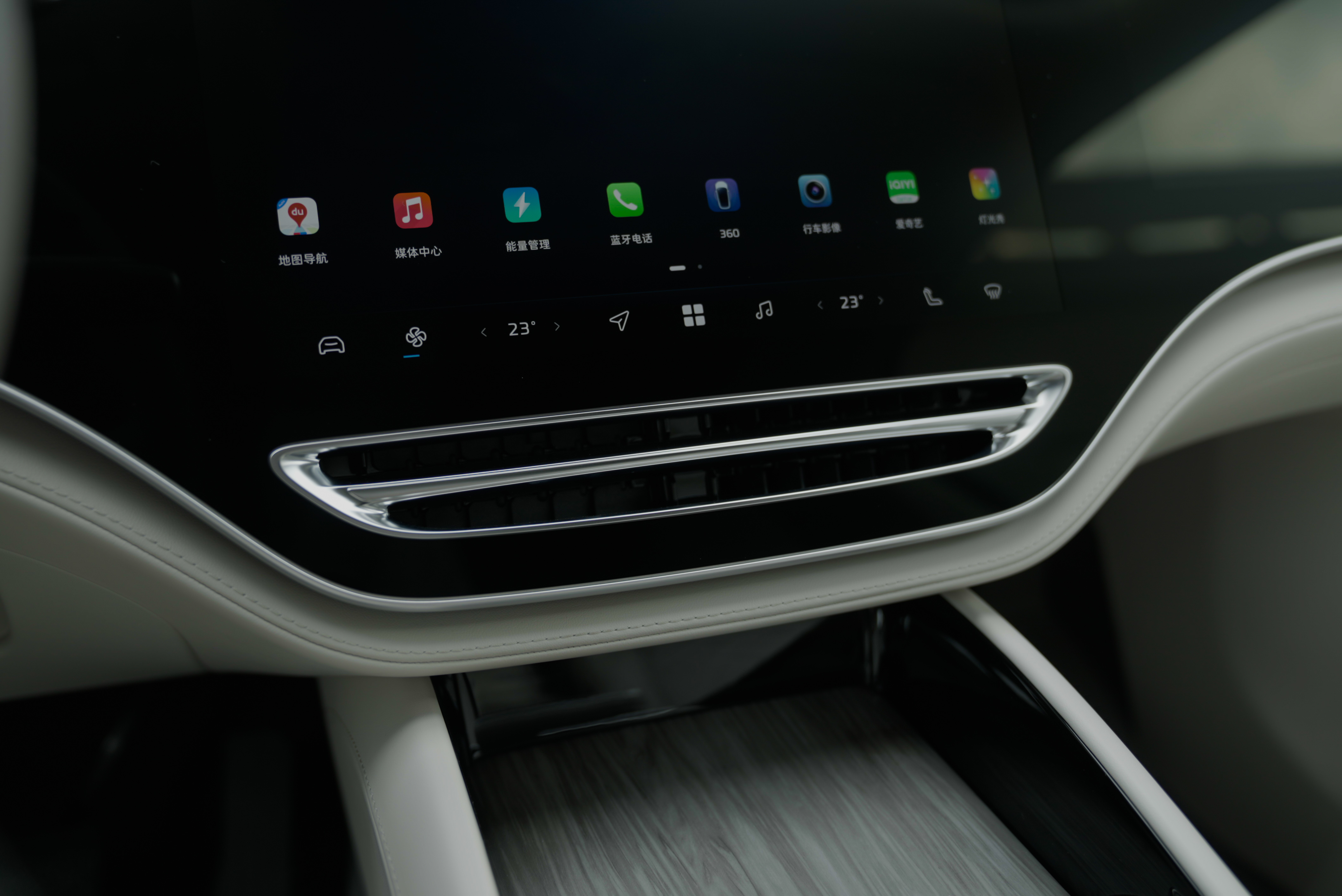
Interestingly, the co-pilot screen has an anti-peep design, and under normal circumstances, the driver cannot see what the passenger is watching.

In terms of the car system, R7 currently named their system as RISING OS, adopting a layout of the bottom dock bar, the right map, and the left shortcut card, which are quite common.

Moreover, there is a Touch Bar on the central console of R7, which integrates functions such as one-button seat lying down, 360 imaging, and power mode adjustment.
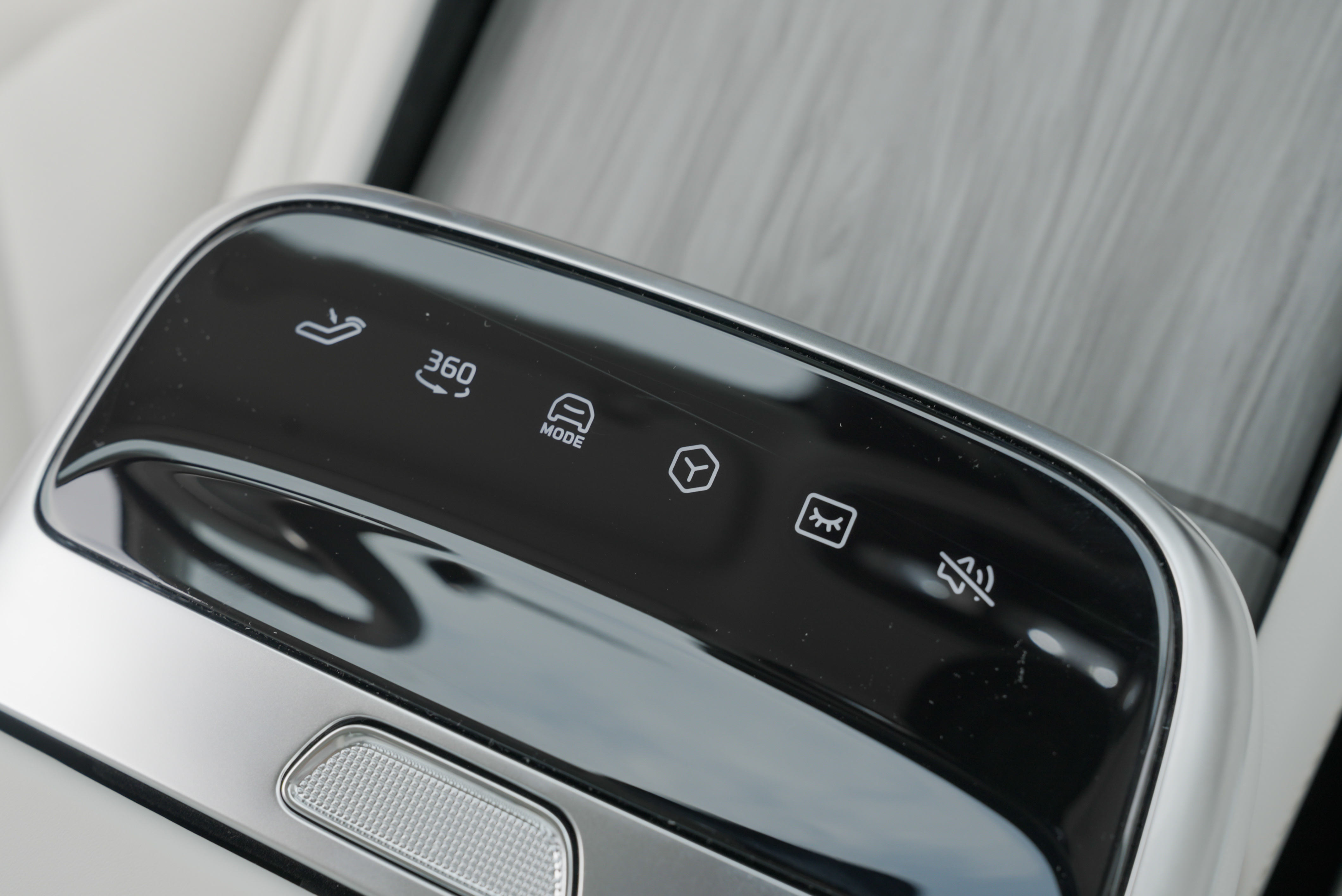
However, the problem is that you have to touch it to activate the function, and the feel of the capacitive button is not very good. The piano baking varnish material will also leave a lot of fingerprints when you are using it. The most unworthy thing is that these functions are also easily accessible on the central screen of the car system, making this Touch Bar a bit redundant in daily use.
Looking up, the streaming rearview mirror has clear display effects.
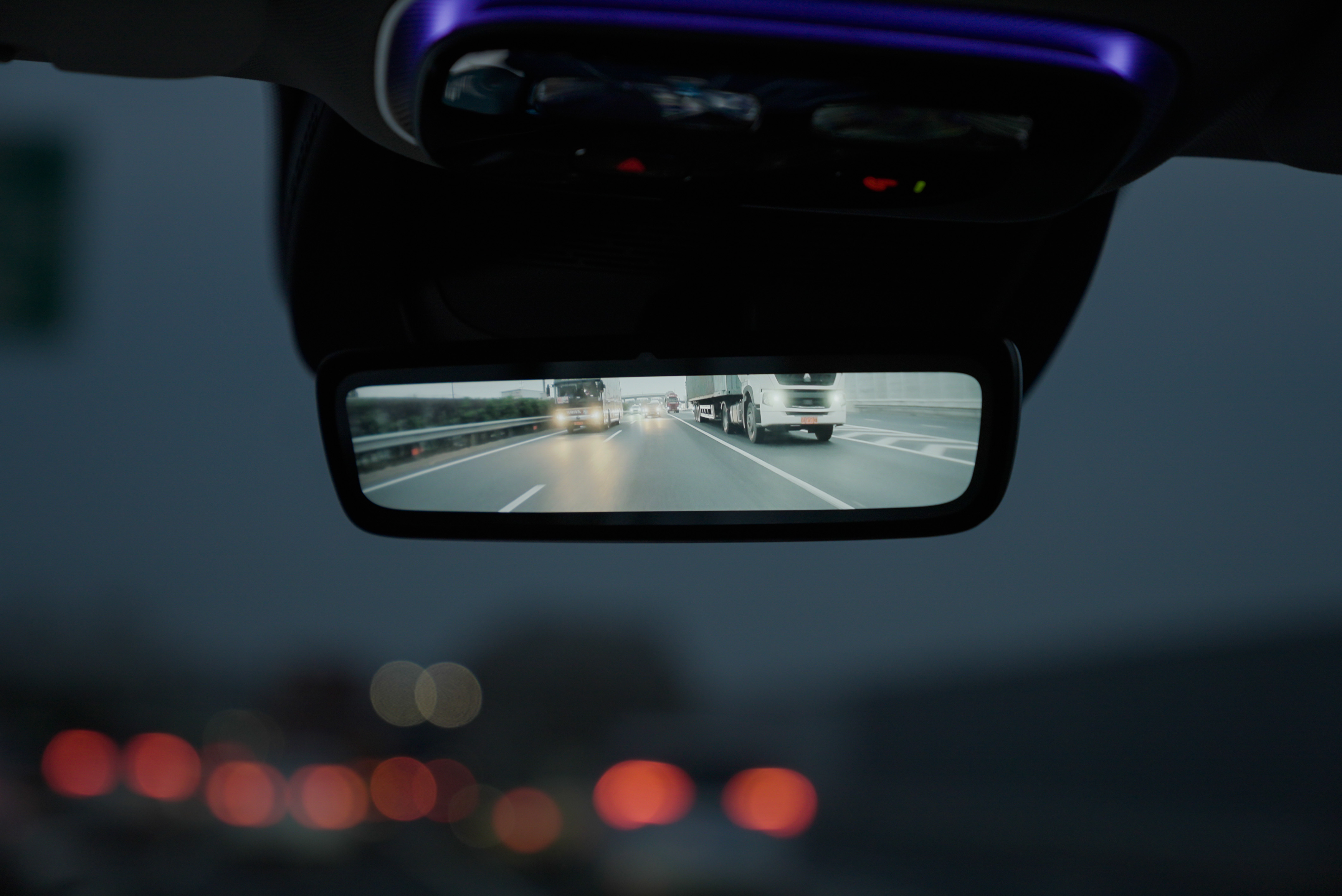
The BOSE 14 speakers in the cabin have good sound quality and analog sound waves.
 Let’s talk about the previously dug small pit. That is Huawei’s AR-HUD with visual enhancement, which was launched in the R7 premiere.
Let’s talk about the previously dug small pit. That is Huawei’s AR-HUD with visual enhancement, which was launched in the R7 premiere.

The parameters and comparisons are as follows:

According to RisingAuto, the highlight of this HUD is its ability to interact with navigation and ADAS. However, the problem also lies here.
It may be a deployment issue for individual vehicles. When driving myself, my eyes cannot focus well on the speed and navigation display on both sides of the HUD, and I need to refocus to see the displayed content clearly.
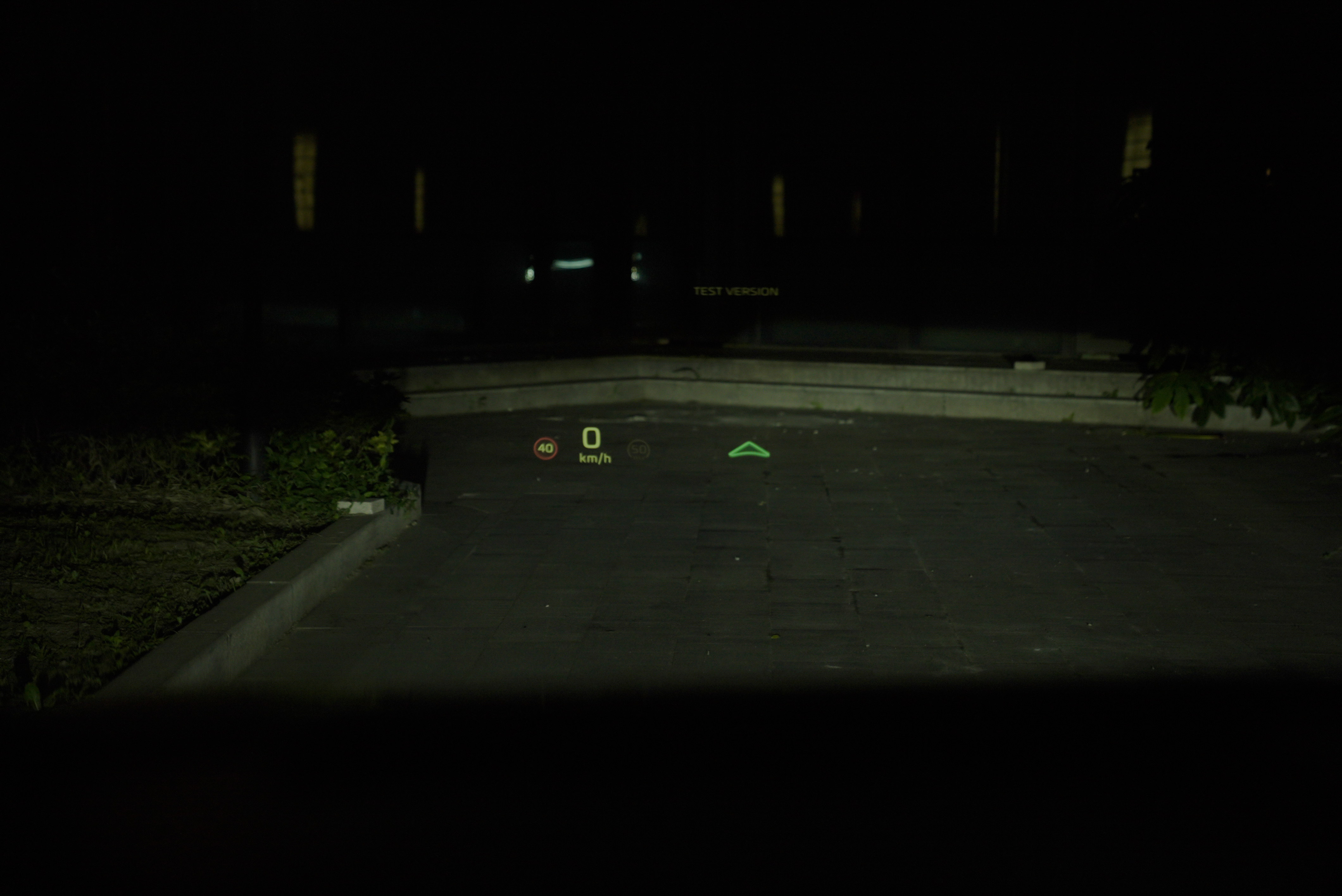
But the biggest problem is that this AR-HUD will mark the recognized vehicles in front in real time. It’s okay when the number of cars is small on the highway, but once entering the urban road section, there will be dense marks on the HUD, which not only obstructs the road, but also causes a certain dizziness when I see so many marks. I think this is the biggest drawback of R7 in terms of visual assistance for driving.
However, the TEST VISION shown above also indicates that the current HUD display is only a test version. We can look forward to whether RisingAuto will continue to optimize the HUD display effect in the future.
In addition, this HUD can also support screen casting. But the imaging effect and texture of this…it’s hard to say.
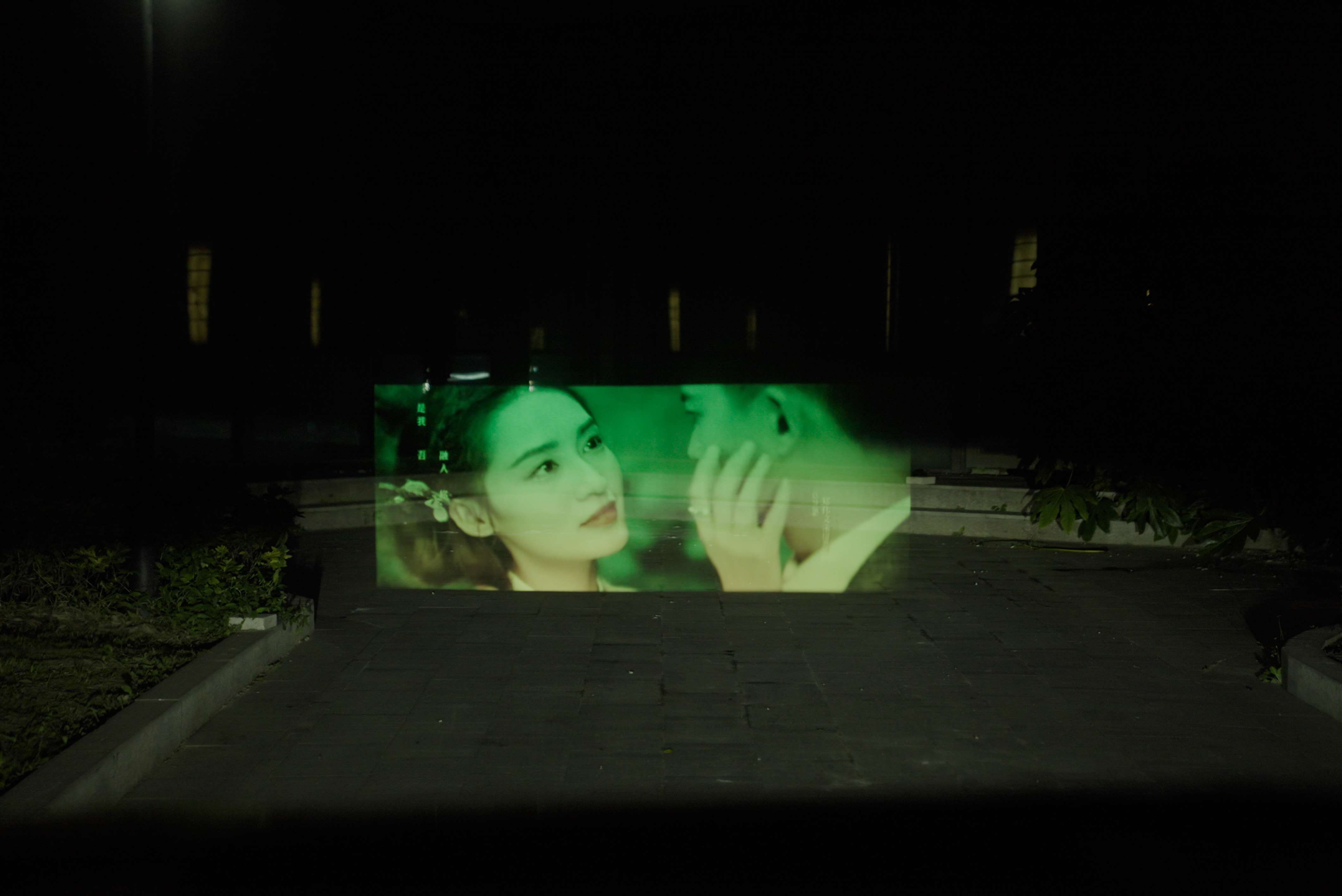
In short, R7’s performance in the car is still commendable. Although there are many small flaws, the total number of advantages is more. And as the first high-end product of the RisingAuto brand, R7’s performance is definitely remarkable.
ConclusionTo sum up, the RisingAuto R7 has comfortable and high-quality driving experience, user-friendly assisted driving system, spacious interior, and high configuration as its advantages, while the disadvantages include slightly higher wind noise, small trunk space, and unsatisfactory HUD display effect.
Therefore, I believe that the RisingAuto R7 is suitable for people who pursue comfortable driving quality and are interested in assisted driving and intelligence.
However, the price of around 300,000 yuan is precisely the most competitive price range for new energy vehicle models. Whether RisingAuto can take on this challenge remains to be seen and the answer will be given by the market.
This article is a translation by ChatGPT of a Chinese report from 42HOW. If you have any questions about it, please email bd@42how.com.
